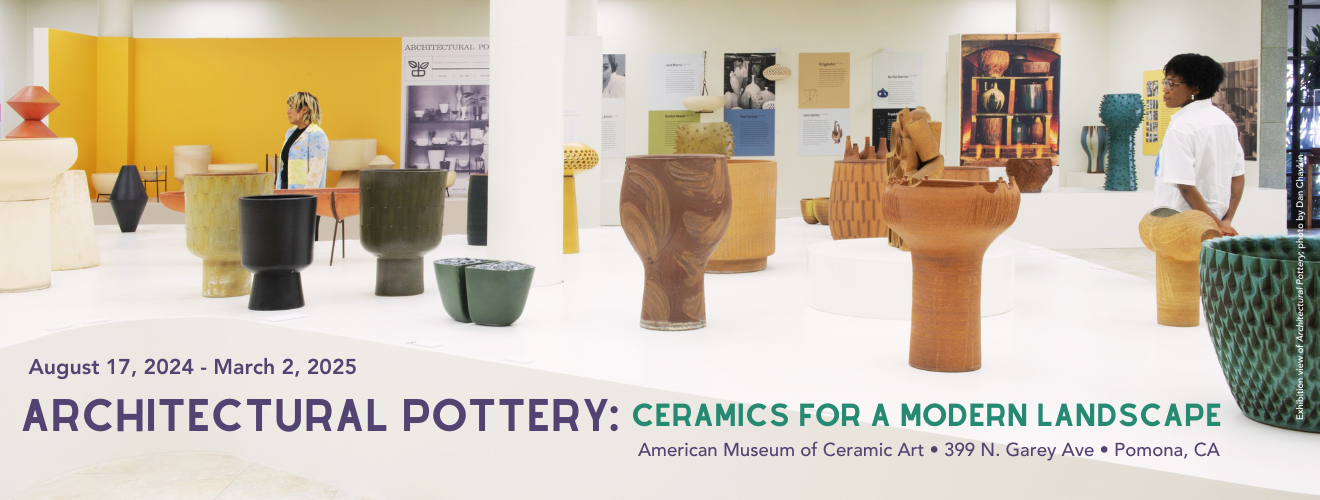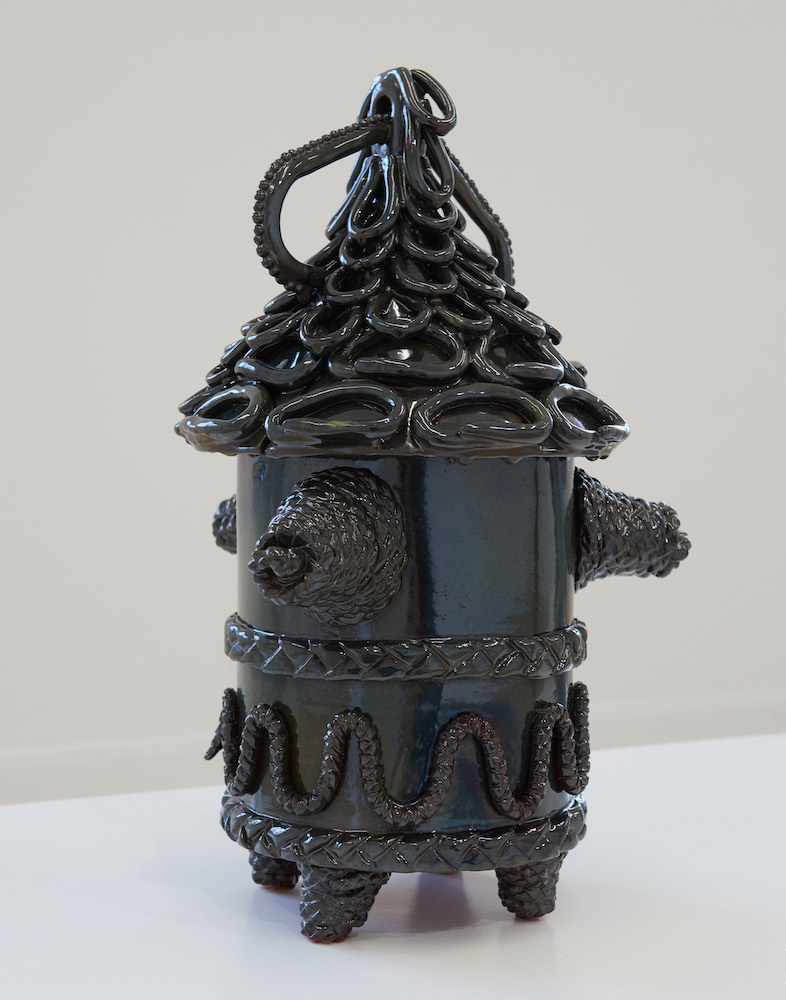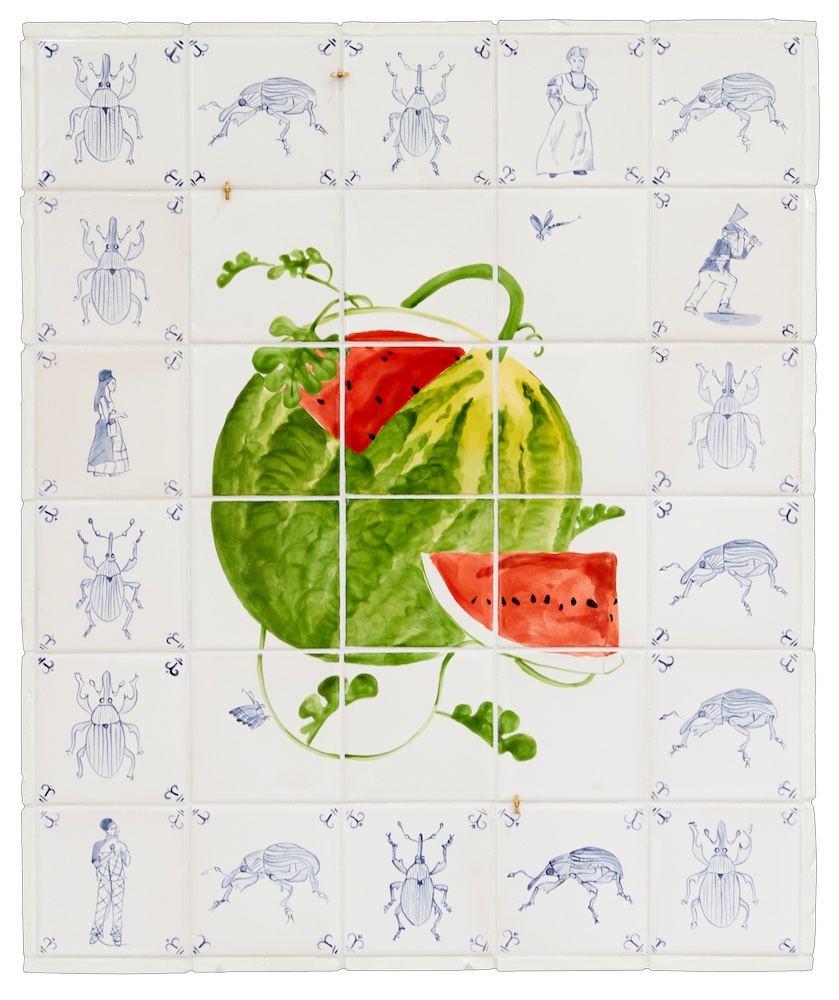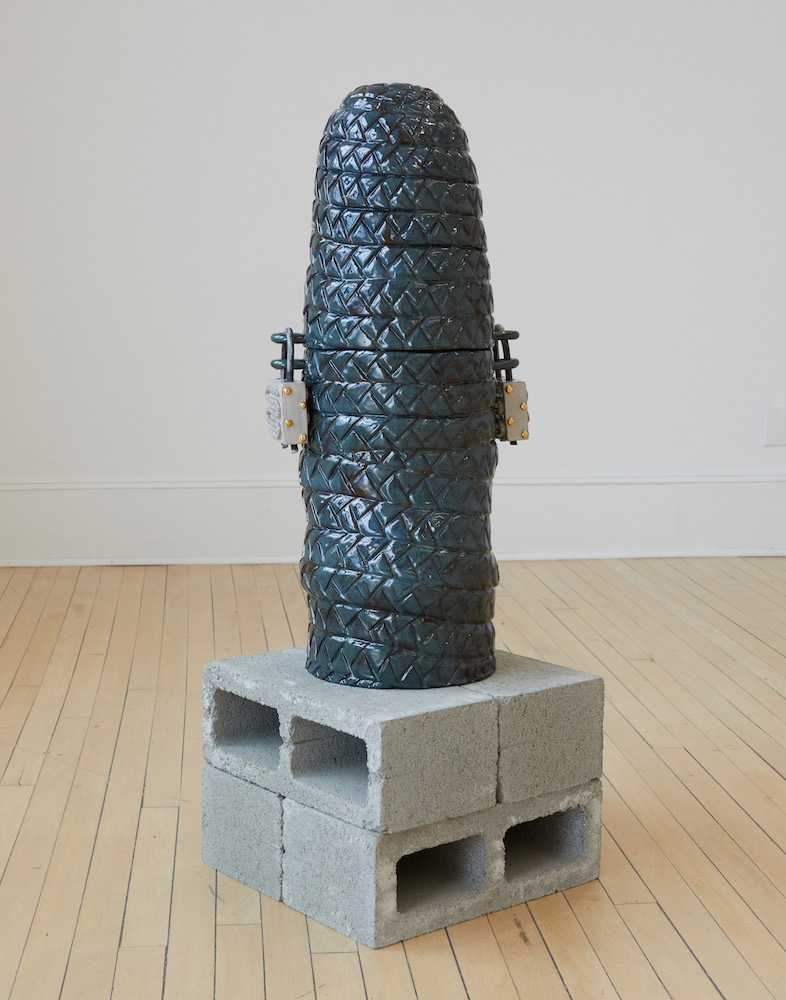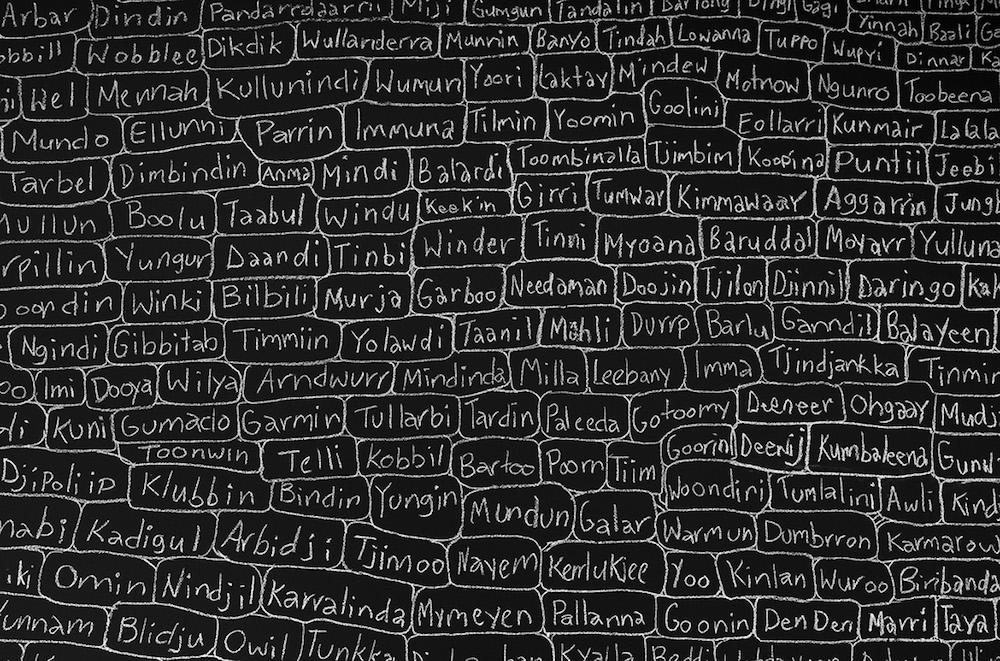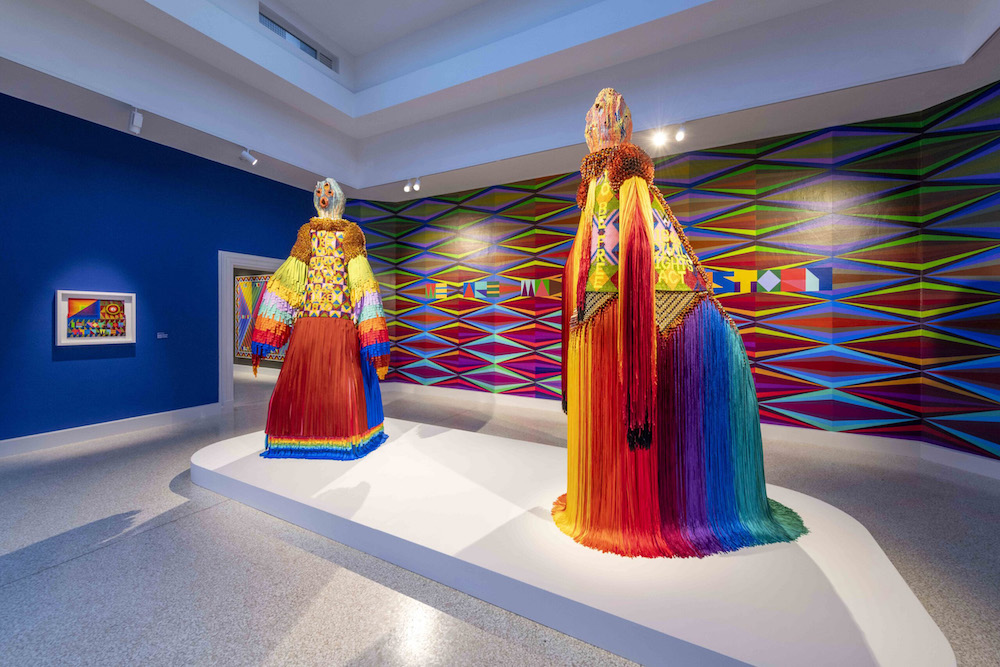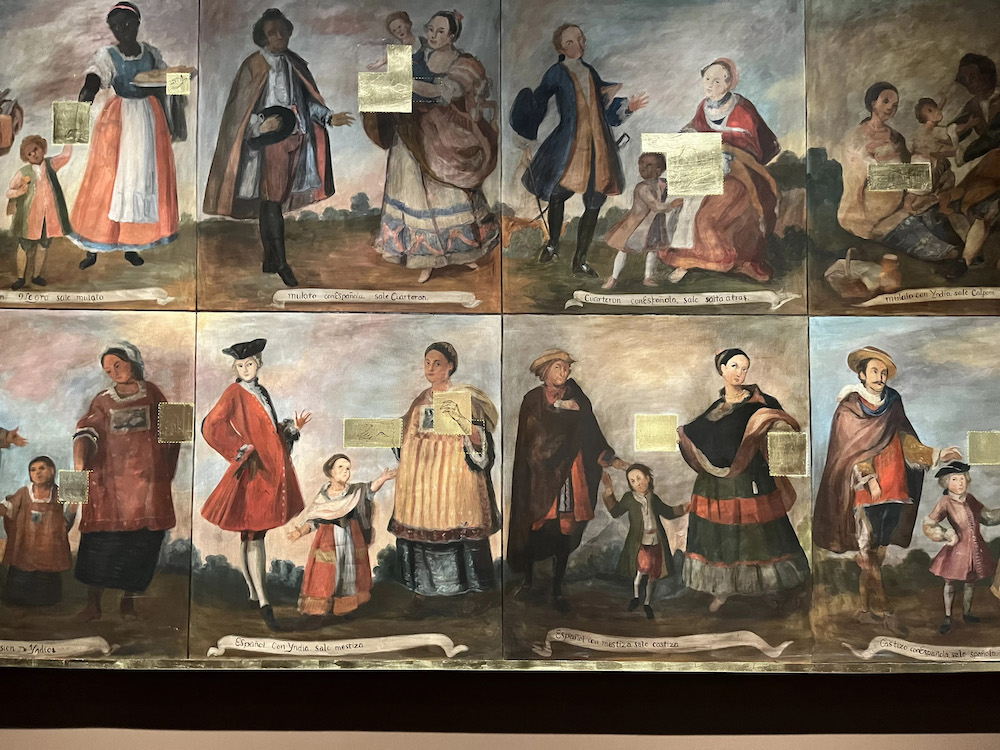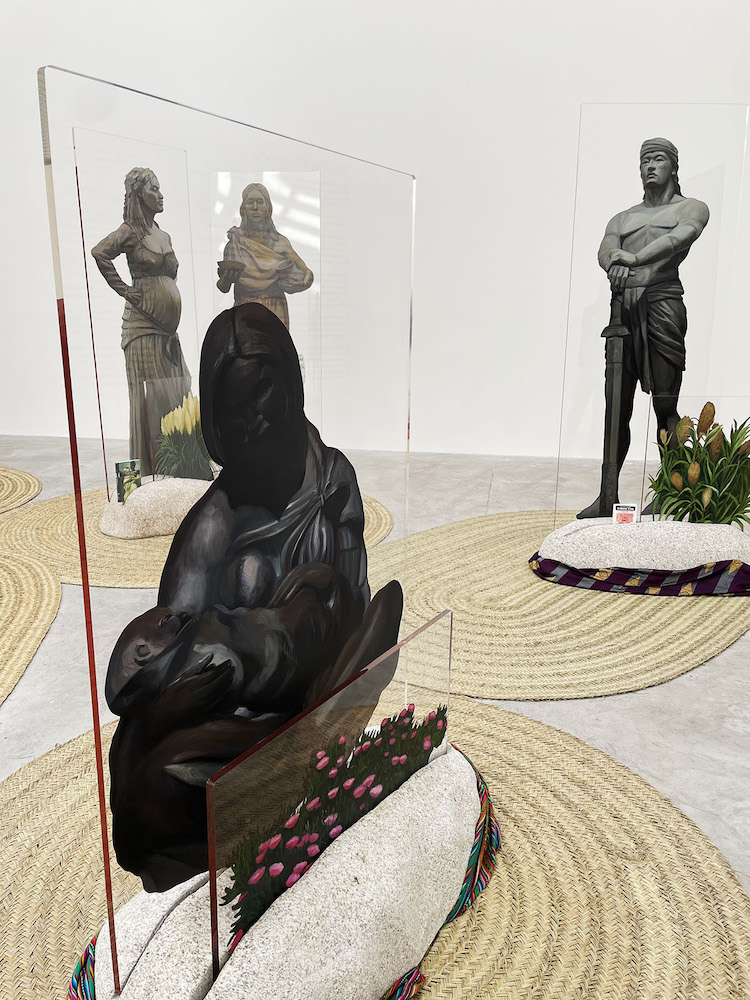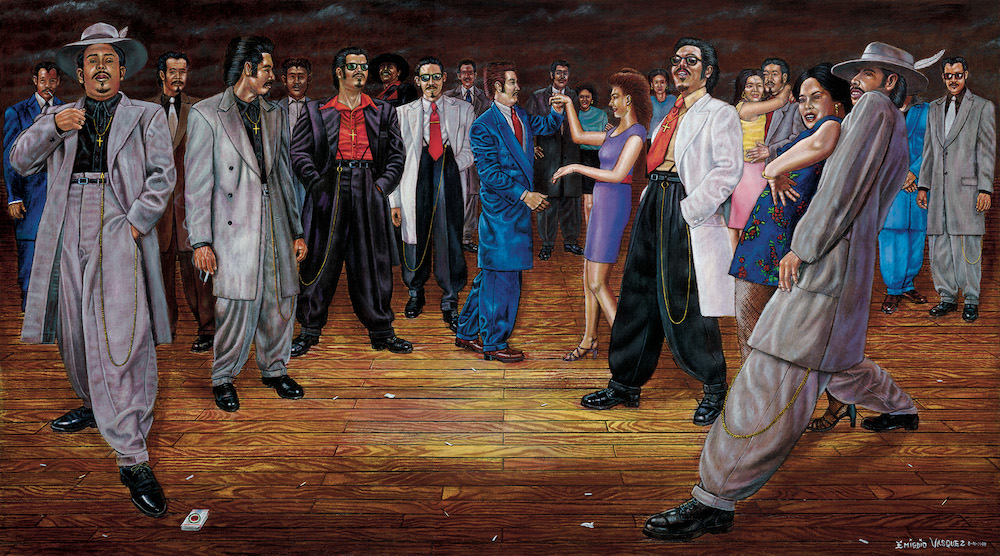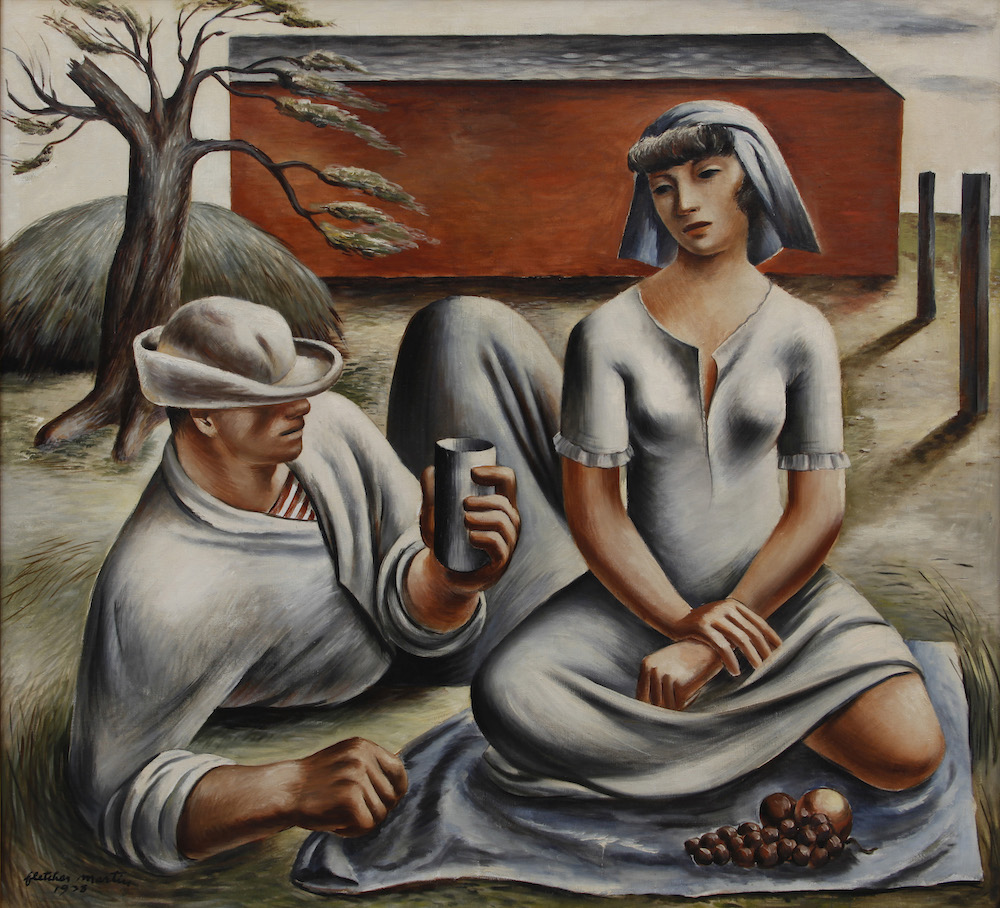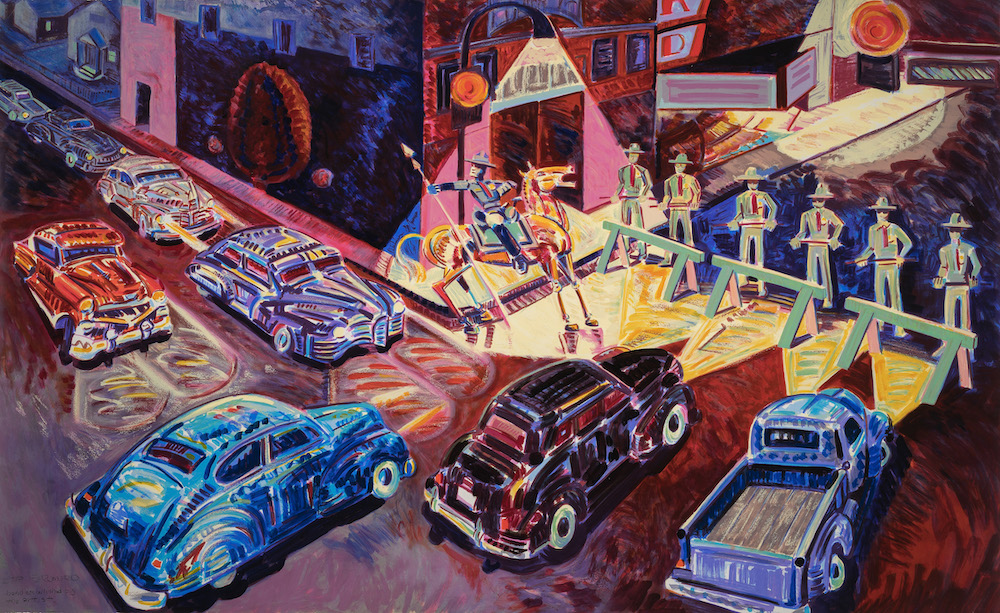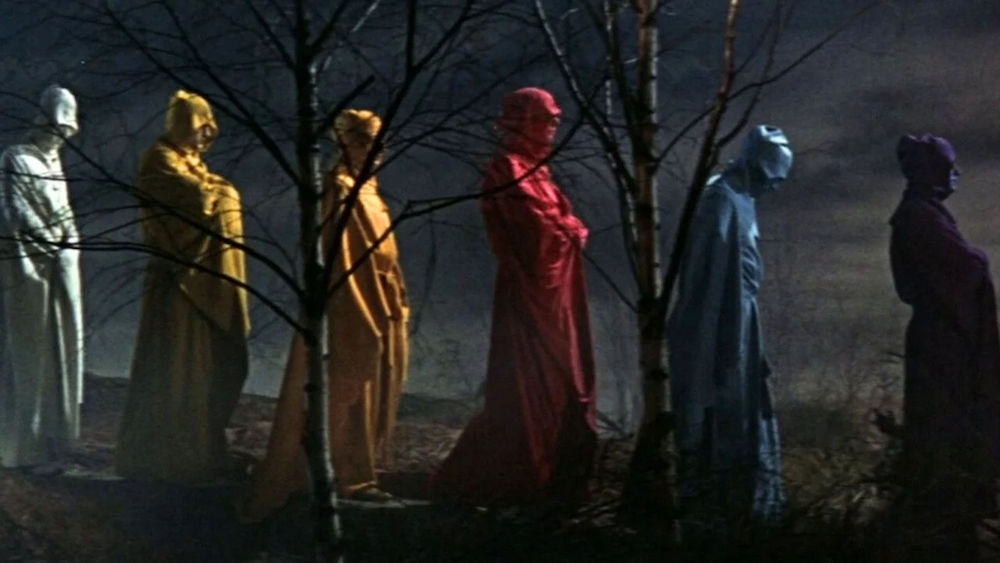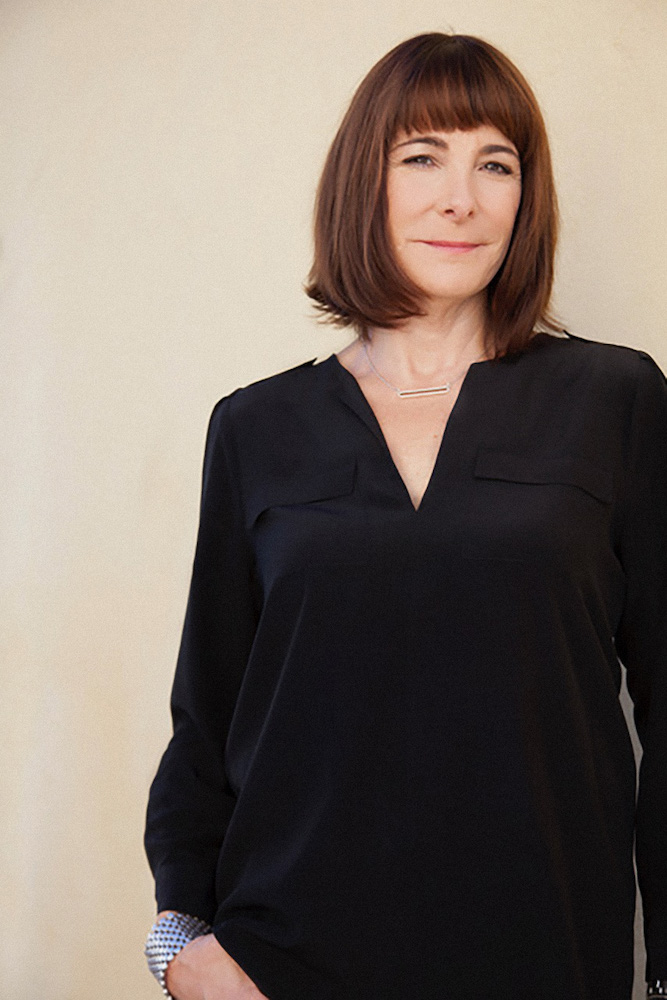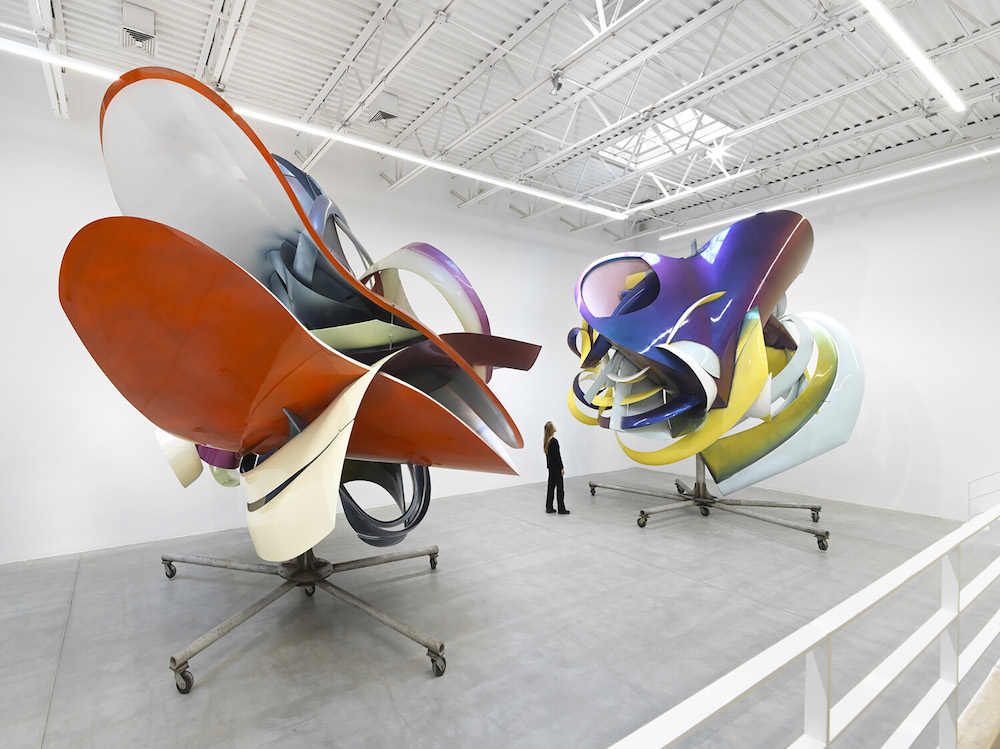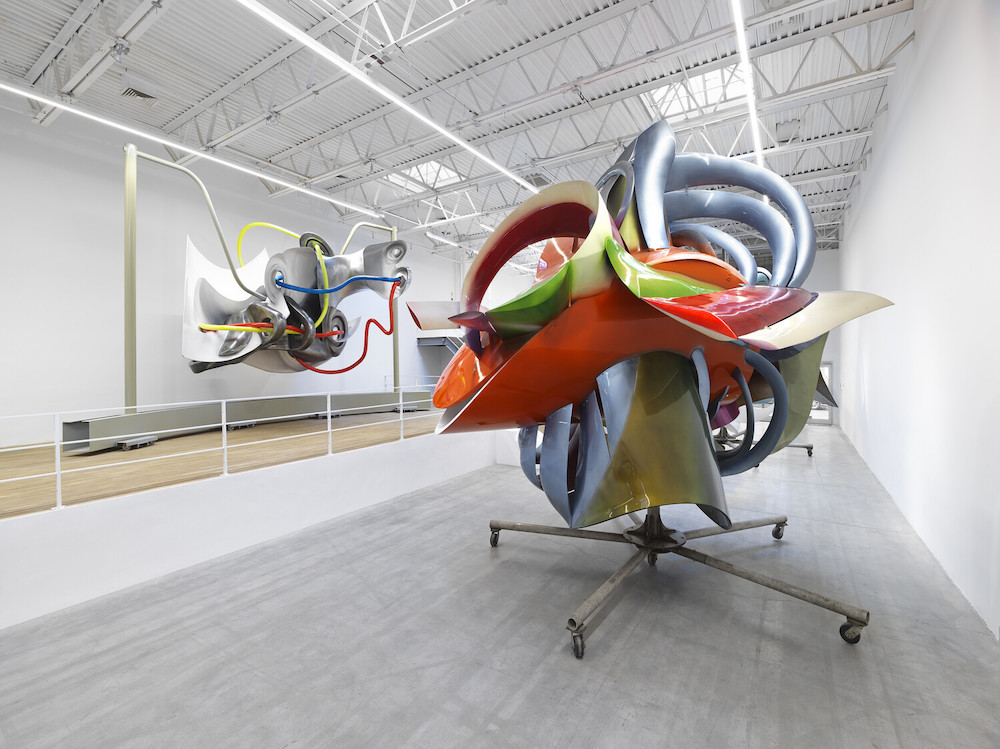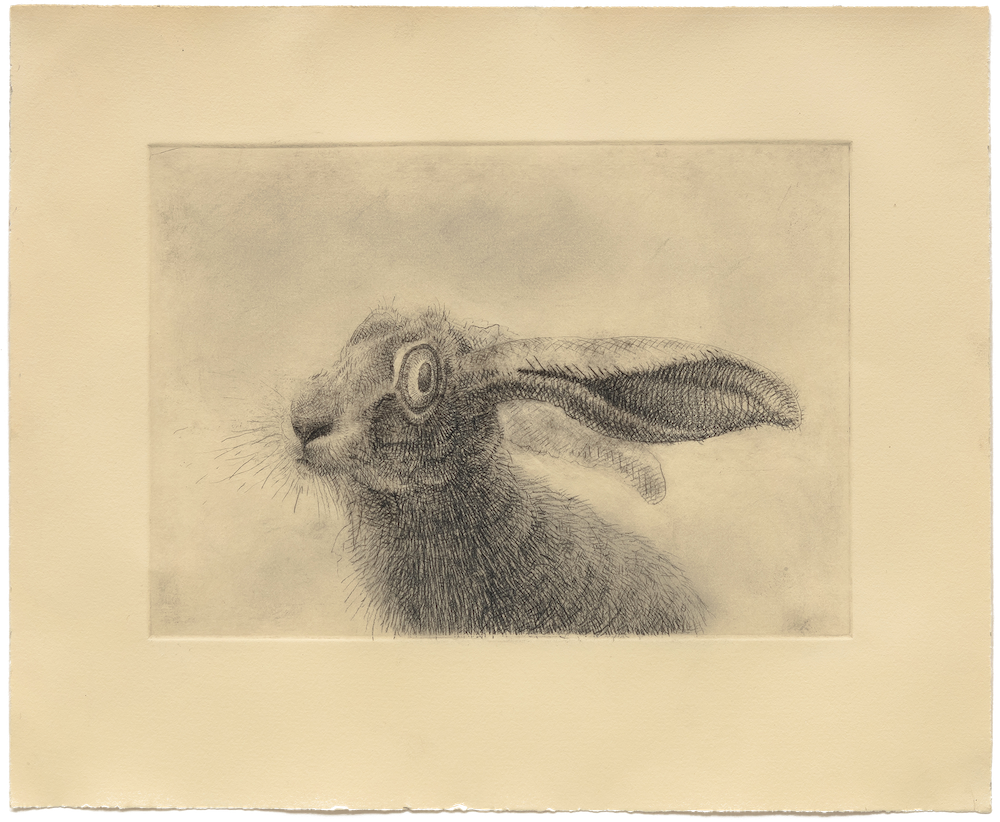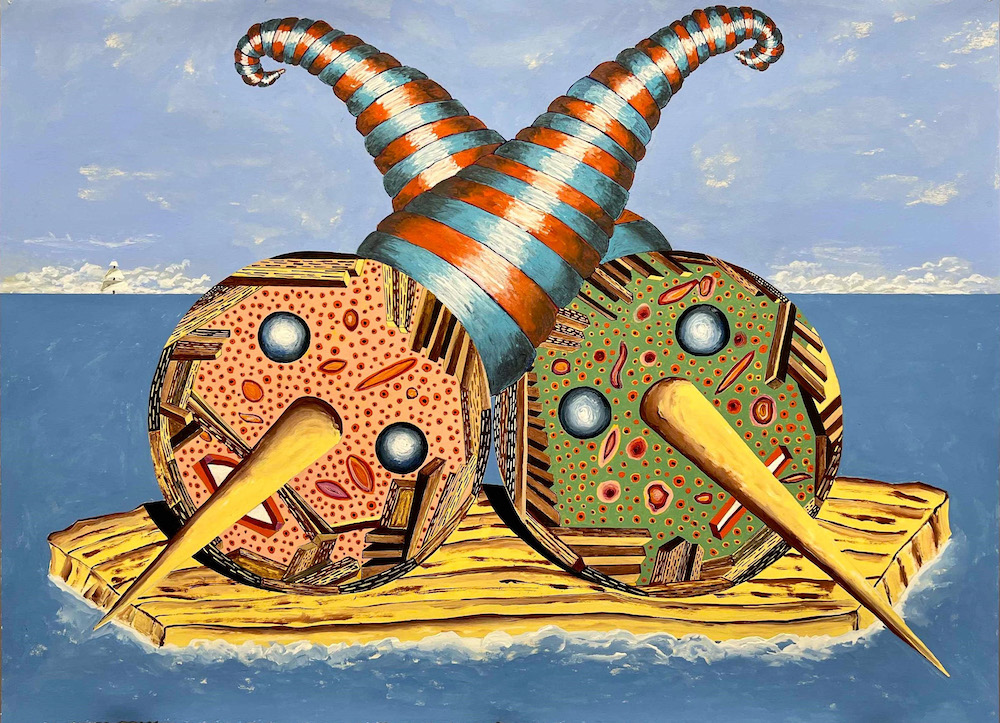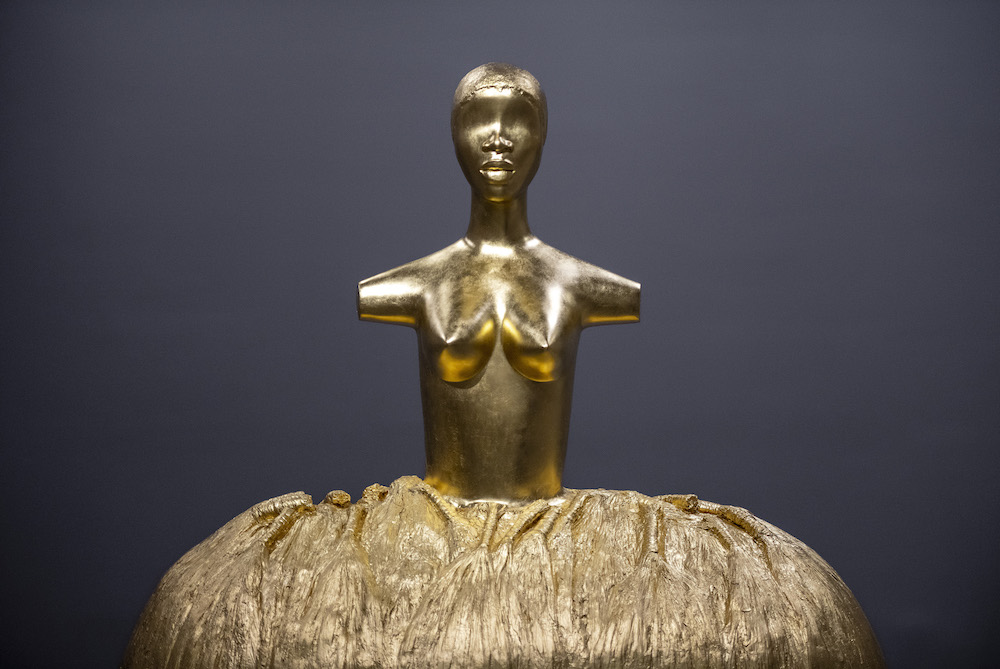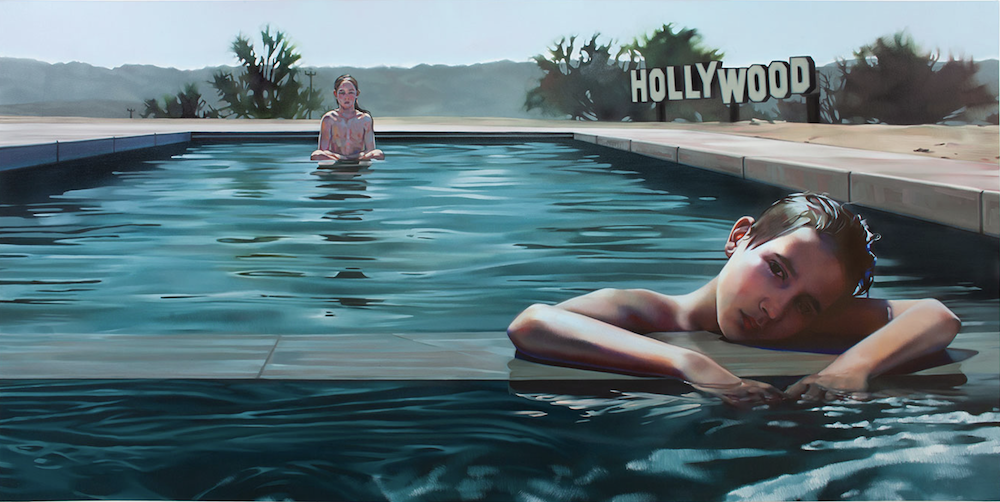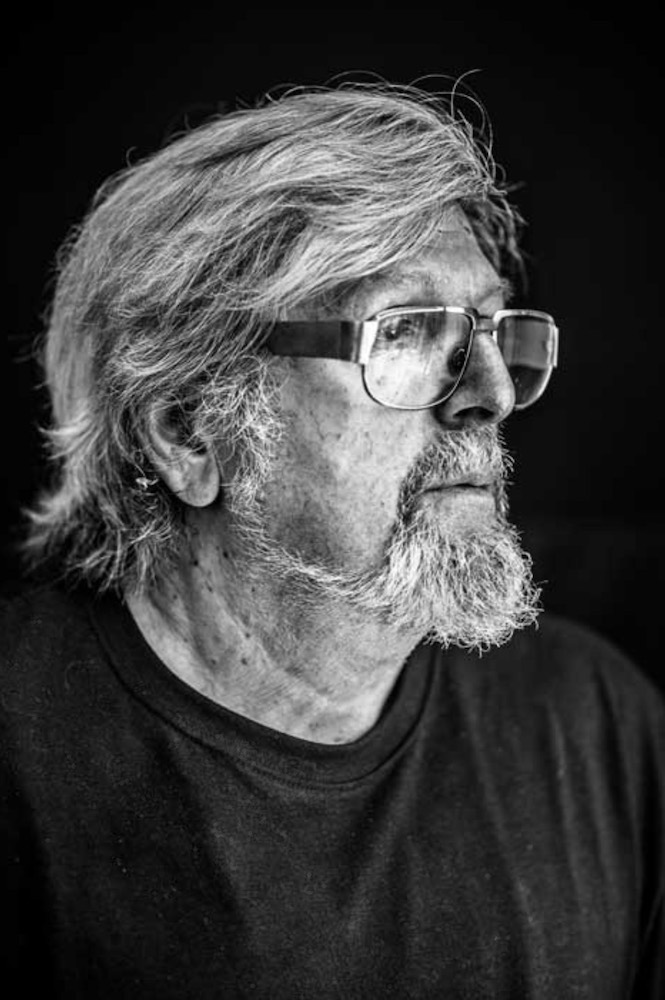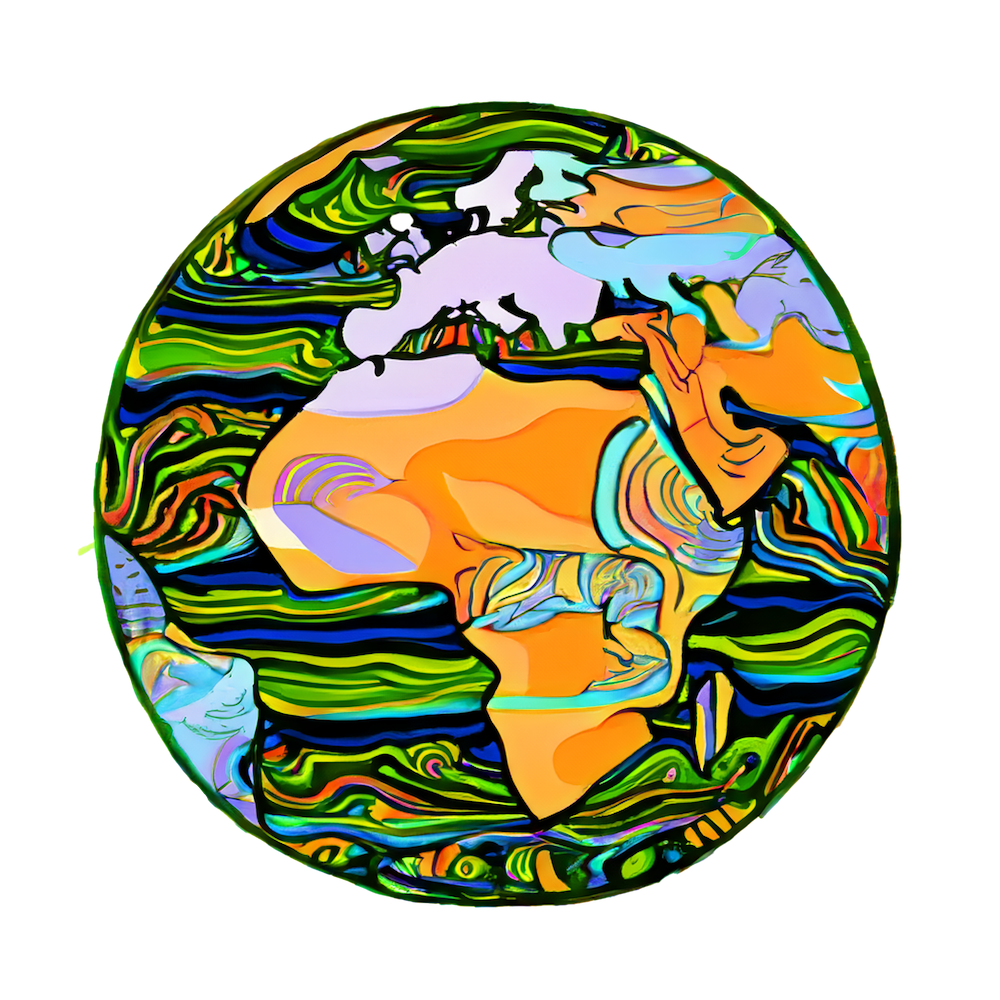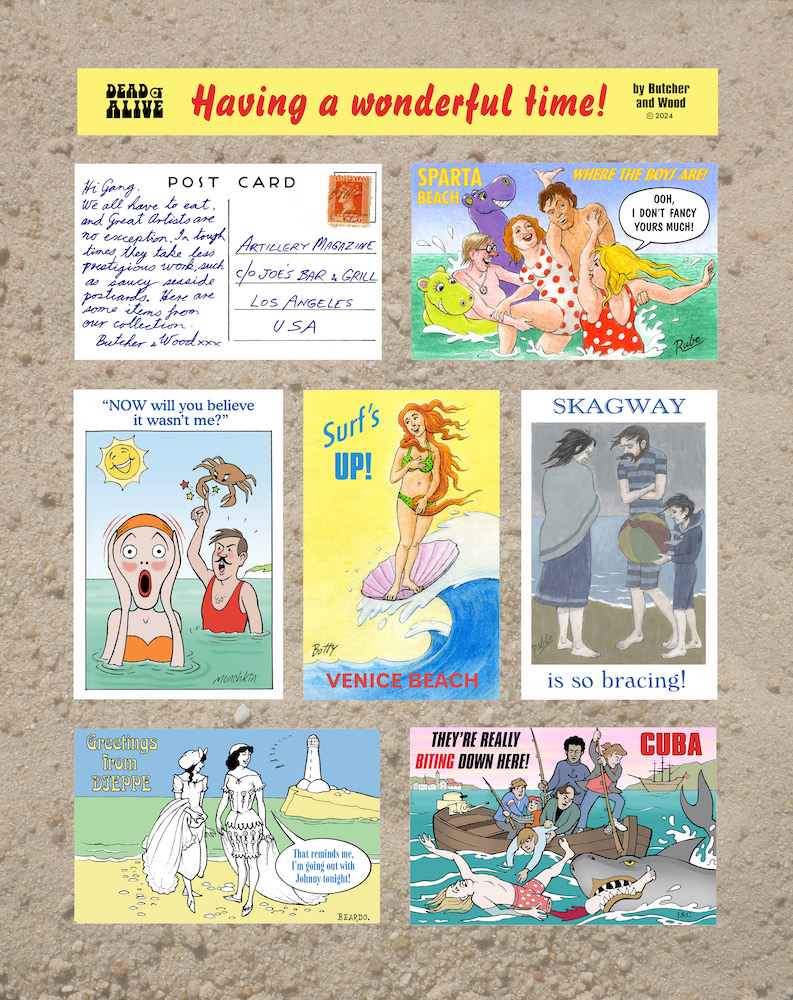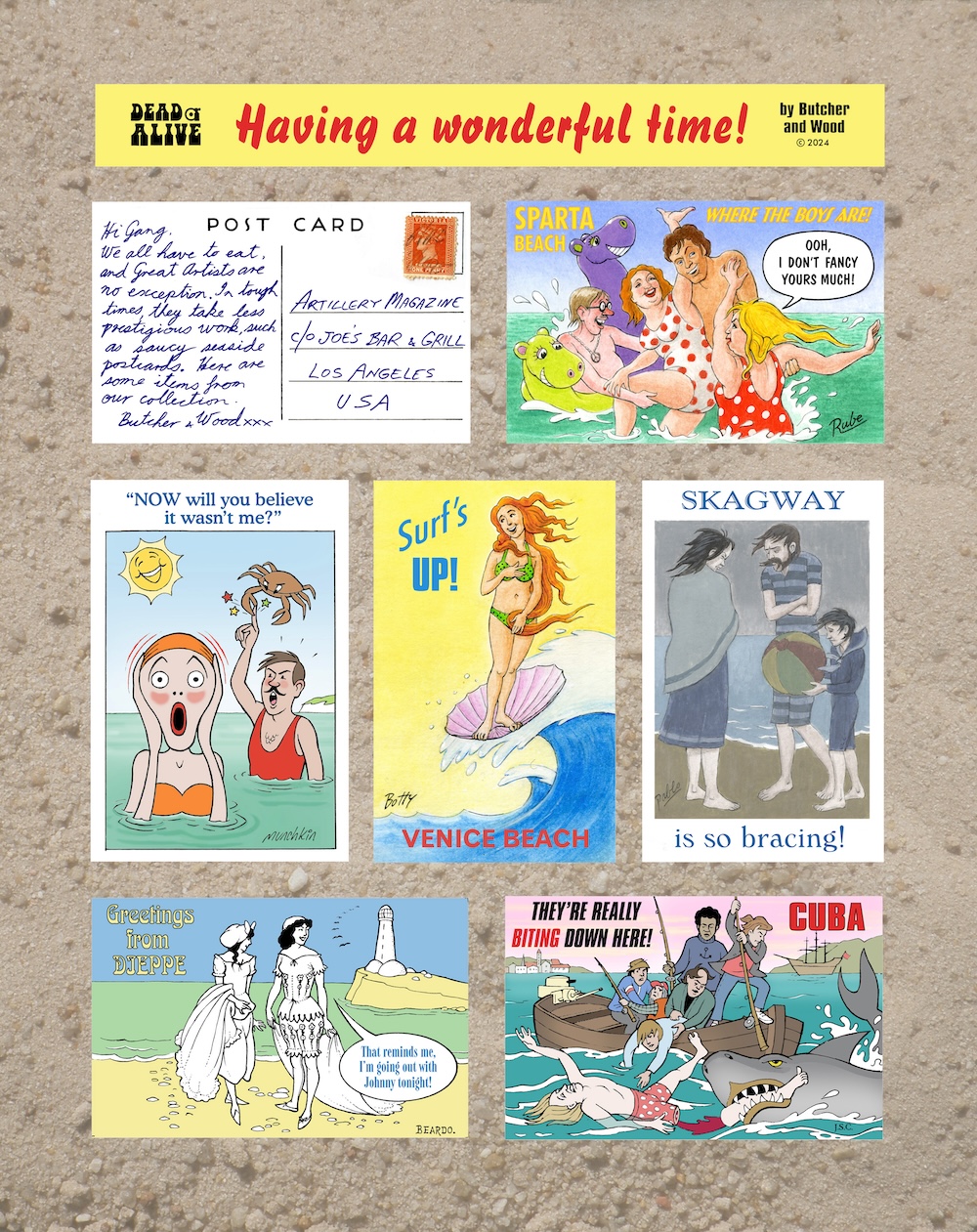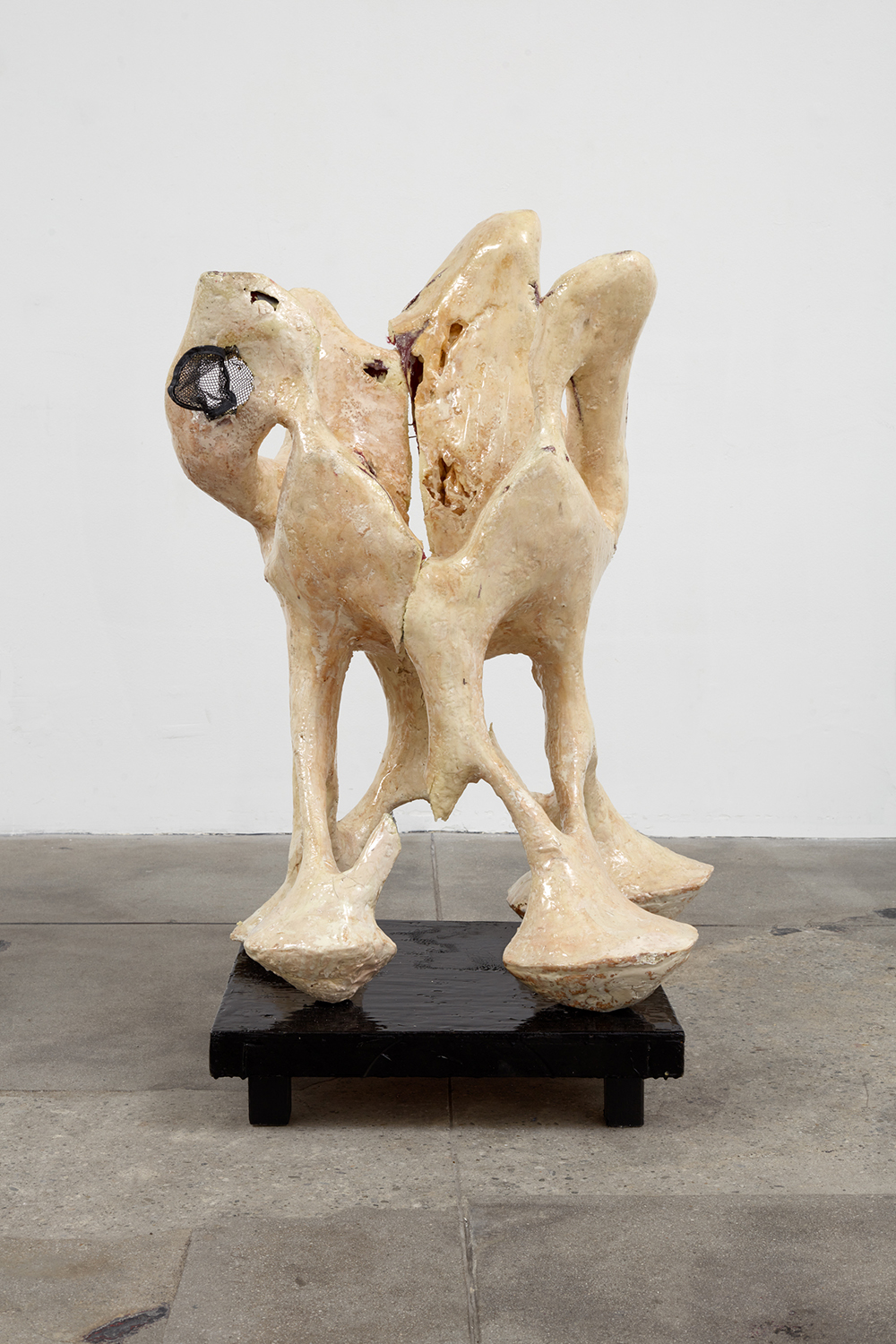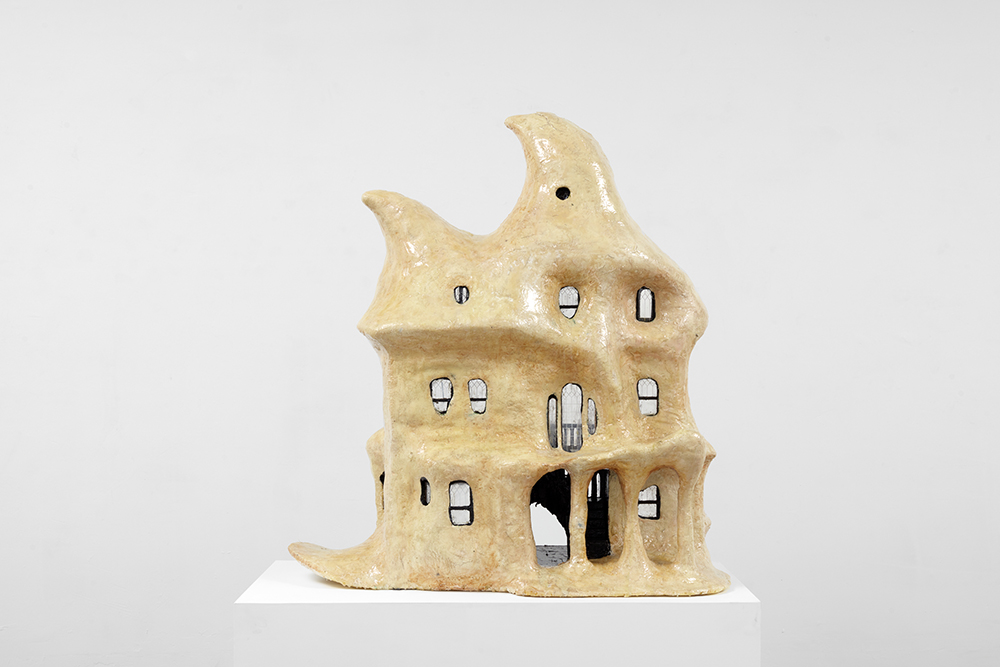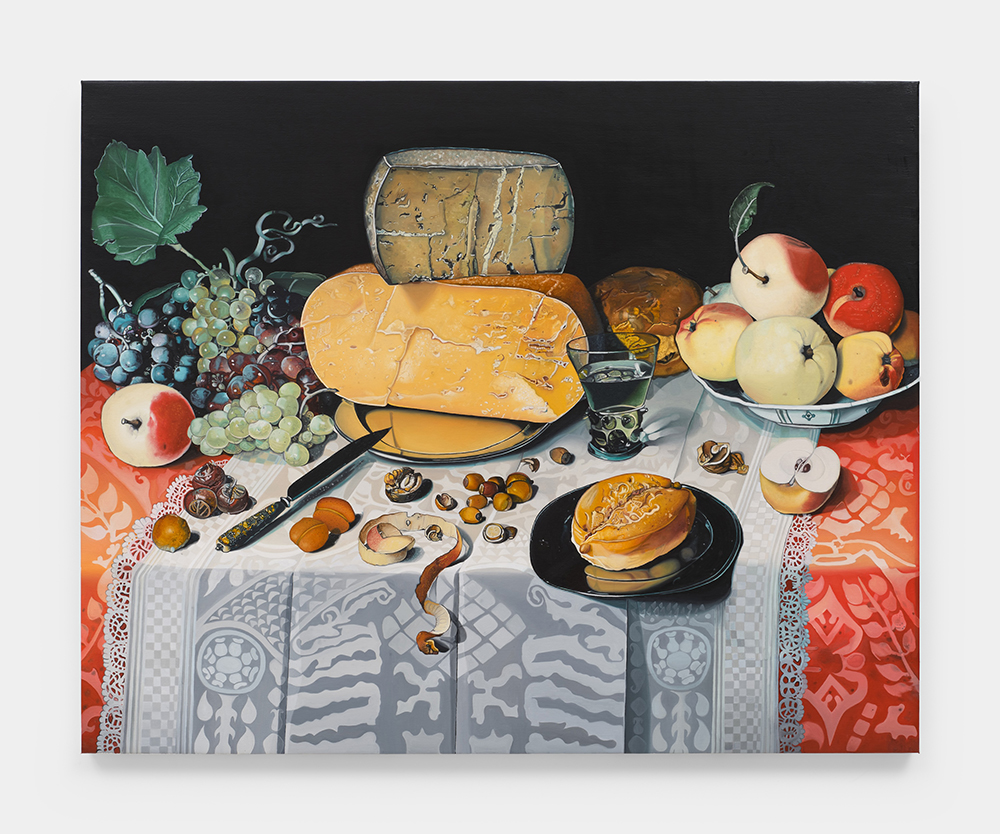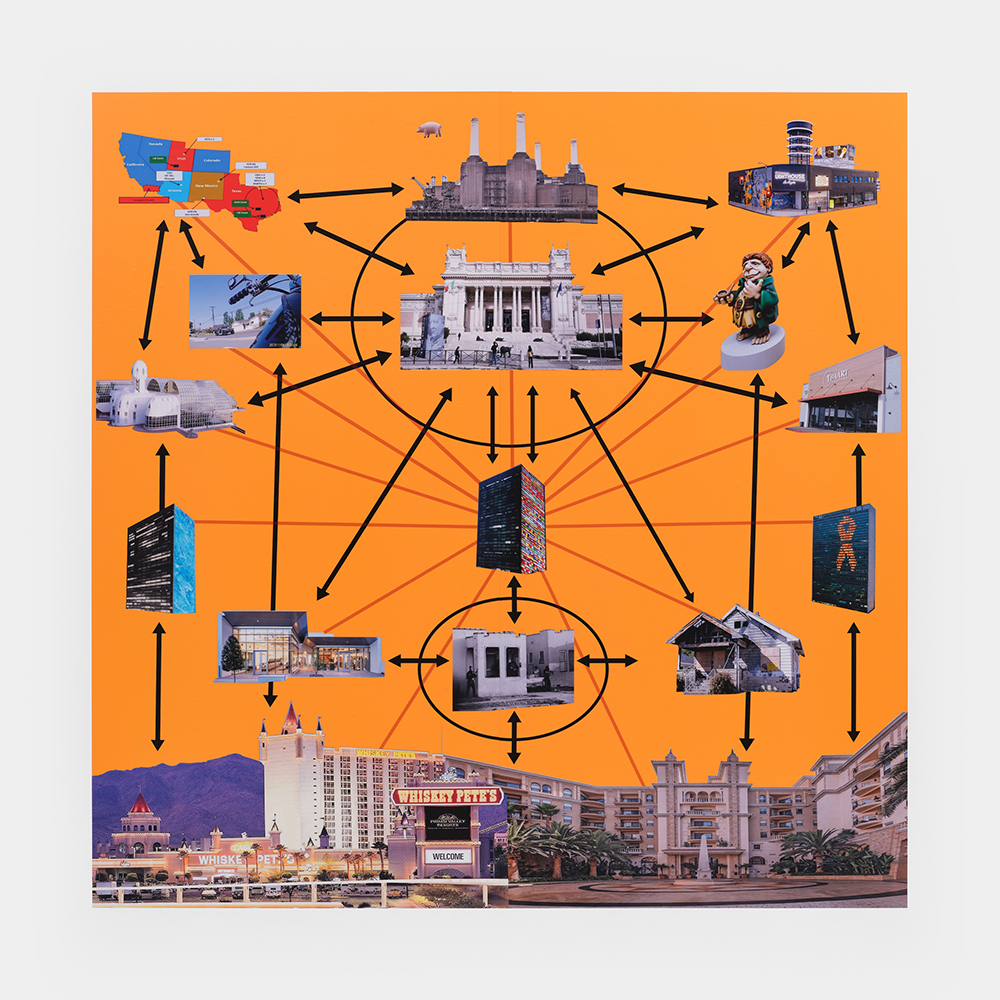Your cart is currently empty!
Category: z-Past Issues
-

From the Editor
July/Aug Volume 18, issue 6 Dear Reader,
Dear Reader,As a kid, I didn’t get to do much traveling. The family trips we took were always by car to visit relatives, somehow miraculously fitting seven of us into a big two-toned Oldsmobile. My dad used to roll down the window, just a sliver, to blow out the smoke from his cigar. On our way to Chicago, where my Italian grandparents lived, we usually passed through St. Louis. We never stayed there, but sometimes we got stuck in traffic and detoured into the city on a boulevard with shops, theaters and bright lights, with cars honking and skidding on the wet pavement in the early evening mist. I loved the handsome red-brick houses all lined up, some of them lit up with Christmas lights, as most often we were traveling during the holidays.
This is when my mom would roll down her window and sigh heavily, “I love the smells of the city.” It became a family running joke, and we teased her mercilessly with fake coughing and choking while holding our noses.
I’m with Mom: After being raised in a tiny southern Missouri town, I loved every minute in the city. Chicago, where my mom grew up, was a thrill beyond belief—Lake Michigan was the ocean, the Chicago River, a canal in Venice, and the Chicago L was better than a Disneyland ride.
This was the extent of my traveling as a youth, and I felt beyond fortunate to have had the experience; it enriched my life in so many ways. My exposure to the Chicago Art Institute played a huge part in my lifelong passion for the arts. The different cultures and diversity in the metropolis opened my eyes to a whole other world. Travel naturally elevates one’s tastes and experiences, even if it’s not that far from home.
In this issue, our Ask Babs columnist answers a reader who wonders if they should be traveling to art fairs and biennials around the world to enhance their burgeoning art career. A resounding yes, Babs replies, in a cautious manner though—she recognizes not everyone has the means to go jet-setting and suggests the next best thing: visiting websites, watching films, and reading about foreign places.
Our Summer Travels issue offers just that. New York contributor Sarah Sargent focuses on the positive in this year’s Whitney Biennial, an otherwise “meh” show. LA contributor Alexia Lewis was invited to Richmond, Virginia, to attend a ceramics arts conference where she finds the art community’s way of dealing with their glaring Confederate past surprising and hopeful. Patricia Watts takes us to Italy for the Venice Biennale; this year the art gets real. But if you’re an Angeleno just staying put, a short trip to Orange County might be worth your while. Writer Liz Goldner discovers California gold at the Hilbert Museum’s newly expanded space. The massive California scene-painting collection will certainly take you on a Golden State journey. And we invite you to take that journey with us too.
-

NO REALER THAN OTHER THINGS
Focusing on the Positive at This Year’s Whitney BiennialThe 2024 Whitney Biennial—“Even Better Than the Real Thing”—features artworks, films and performances by 71 artists and collectives. Within the show’s title is an obvious allusion to AI, but the Whitney suggests that it also raises the possibility of other ideas of “the real,” giving artists considerable latitude to explore the body, identity and precariousness of the natural world. Chrissie Iles and Meg Onli organized the performance program with guest curator Tara Cheek, and the film program with guest curators Korakrit Arunanondchai, asinnajaq, Zackary Drucker and Greg de Cuir Jr.
This year’s Biennial is full of grandiose gestures that don’t add up to a whole heck of a lot. For instance, Kiyan Williams’ Ruins of Empire II or The Earth Swallows the Master’s House (2004), which was commissioned by the Whitney, seemed cheesy and obvious. Other works by other artists struck me in turn as derivative, sentimental, empty, dry, gimmicky—or just plain meh. As might be expected these days, there’s very little painting, with three of the six painters sharing a similar style that almost resembled airbrushing. There are an abundance of videos that can be accessed remotely, but with the exception of snapshots included in Carmen Winant’s The Last Safe Abortion (2003), and B. Ingrid Olson’s collaged pieces, no photography.
I was surprised to see Mavis Pusey included in this biennial. She is not only well-known, but also dead (going on five years now). I admire Pusey and would welcome a retrospective of her work at the Whitney. Fortunately, there’s one being mounted in 2025 by Philadelphia’s ICA and the Studio Museum in Harlem. But shouldn’t the Biennial be focusing on emerging artists—the ones who really need the career boost such inclusion would provide—not galleries and estates?
Moving through the show, I was able to parse out works that possess that ineffable spark really good art has. My selections struck me as original, visually appealing and fully realized, boasting a perfect alignment of vision and execution. Take Suzanne Jackson (Savannah, GA), who refers to her dazzling pieces (2020–21) that seem to exist somewhere between painting and sculpture as “Paint suspended in space.” Composed of many layers of acrylic, detritus and gel with netting and natural items like seeds from her garden, the work is hanging from the ceiling and seen in the round, meaning each piece comprises two separate paintings (front and back). Splotches of brilliant color explode across the translucent material and the scrunched-up clear medium creates surfaces that shimmer and glitter seductively. It’s a glorious union of decrepitude and beauty in which the pieces resemble frozen diaphanous veils, or tapestries wrested from the ruins of some post-apocalyptic midden.

Seba Calfuqueo, TRAY TRAY KO (still), 2022. Photo: Sebastian Melo. © Seba Calfuqueo. Courtesy of the artist. Seba Calfuqueo’s (Ngulumapu, Wallmapu, Chile) Tray Tray Ko (2022) uses film and performance to explore Mapuche spiritual beliefs surrounding water. The artist, wearing a sarong fashioned from shiny blue fabric, drags a long piece of the same material by a rushing stream in a forest. To watch the fabric move amidst the greenery, snagging and shimmying, is mesmerizing. Its color and glossy folds more and more, assuming a resemblance to the color and movement of water. Calfuqueo wears dangly earrings that jingle like temple bells, providing the perfect counterpoint to the water’s basso profundo roar. Eventually, she reaches a wide pool with a waterfall—considered extremely salubrious by the Mapuche—which she stands beneath. The piece highlights the sacredness of water at a time when land and water in Chile (and elsewhere) are under threat from pro-development forces. The fluidity of the fabric and the water also speaks to gender fluidity—a matter of importance to Calfuqueo, a trans woman.
Eddie Rodolfo Aparicio’s (Los Angeles) Paloma Blanca Deja Volar/White Dove Let Us Fly (2024) features a shiny rectangular box about the size of a billboard that looks like it’s made from tortoiseshell-colored glass. In fact, it is artificial amber that Aparicio produces from tree resin. He uses amber for its healing properties, but it also has a more symbolic importance. The trees from which the amber comes were imported to Southern California along with the introduction of laborers from Mexico and Central America. Just as the laws were changed so that people who entered the US legally to work were deported, the trees were removed from Los Angeles because their roots didn’t have enough room to thrive. To examine “privilege and solidarity,” Aparicio has packed his amber with documents generated by white allies working in LA and New York on behalf of immigrants. The amber is not stable and is expected to change over the course of the exhibition, shifting to reveal different pages and the struggles themselves that are sealed within it.
In her work, B. Ingrid Olson (Chicago) challenges the notion of a photograph being a “window into a world you’re supposed to enter into” in her installation of work made between 2013 and 2022. Playing with perspective and space, she creates a push-pull between depth and flatness. This tension is also evident in how she portrays the body, summoning it through fractured photographic images—a distorted leg in one—and by positioning various objects into suggestive anthropomorphic arrangements. One’s mind begins to go in one direction and then, realizing it’s not what it seems, one retreats from that line of thought. Olson arranges her photographs on the wall alongside an array of curious flesh-colored sculptural forms. She appears to be doing a similar push-pull thing here with concave shapes that draw one in, with ridges and rims that repel one back.
On the opposite wall hangs K.R.M. Mooney’s (Brooklyn) group of intimate sculptures (2022–24), which have a presence and grandeur that belie their size. Mooney’s classical abstraction is enhanced in interesting ways by his materials. They bring warmth and softness to the metals he employs and provide opportunity for Mooney to experiment, as in using silver electroplating on steel to create a white surface that oxidizes to form a subtle pattern. He thinks of these areas as living surfaces that will continue to change over time. Small blobs of eye-catching molten silver punctuate each piece, adding a dash of amorphous imperfection to the overall rectilinearity. Copper anti-tarnish sheets that he folds onto the surface add a bold visual statement and, as Mooney says, help the silver “care for itself” over time.

Jes Fan, Cross Section (Right Leg Muscle II), 2023. Photo: Olympia Shannon. Collection of the artist. Commissioned by M+ Museum, Hong Kong. Courtesy of the artist; Empty Gallery, Hong Kong; and Andrew Kreps Gallery, New York. Jes Fan (Brooklyn and Hong Kong) used a 3D printer to transform CT scans of the musculature of his body into sculptures (all 2023). Fan derives his palette from a species of incense trees native to Hong Kong, where he grew up. When the tree is injured, it secretes a self-healing resin that has a pleasant fragrance. Fan saw in this a connection to bodies of color and queer bodies that have transformed the internal injuries they have accumulated into something positive. With their looping shape and weathered look, his wall sculptures (cross sections of his leg) suggest such natural found objects as driftwood and bone. Blown glass is used to denote organs and adds a sleek reflective flourish to the otherwise dull, earthy quality of the works. For one piece, Fan co-opted the museum wall, where he created three weird orifices, working the plaster to form fleshy “lips” surrounding the holes. According to Fan, they suggest a conceptual “impregnating of the construct of the gallery” into its very structure.
Like Fan, Lotus L. Kang (New York) is also interested in the body. In Cascades (2023–24) features broad sheets of film draped over steel armatures. The film has been exposed in a “completely wrong” way, according to Kang—she’s interested in pushing materials beyond their accepted limitations. Her film captures ghostly images that suggest blurred landscapes or abstract compositions and evoke fleeting visual snatches of memory. The film is sensitive to light and environmental conditions, continuing to change. Walking through the walls of cascading film that form the installation, you have the sense of architecture, but there’s also something oddly biological about the colored film. Indeed, Kang calls its different hues “blood,” “bruise” and “bile,” and refers to the exposure as “tanning” and the film as “skin.”
Isaac Julien (London and Santa Cruz, CA) describes his five-channel video installation, Once Again … (Statues Never Die) (2022) as a “diasporic dream space.” This arresting work resembles a funhouse—with its maze-like arrangement of wall-sized screens punctuated by freestanding statues. The video is shot in black and white, imbuing the piece with a somber nostalgic elegance. Walking through the installation, one must weave one’s way through the screens, which enhances the installation’s immersive quality. Julien uses the conceit of Harlem Renaissance luminary Alain Locke engaging with the Barnes Collection and Albert Barnes on issues of how art from Africa and the African diaspora is collected and presented. The installation, which includes sculptures by Richard Barthé and Matthew Angelo Harrison, also considers queer desire.

Isaac Julien, Iolaus/In the Life (Once Again…Statues Never Die), 2022. © Isaac Julien. Courtesy of the artist and Victoria Miro, London. Mary Lovelace O’Neal’s (Oakland, CA and Merida, Mexico) monumental works are paeans to paint. One sees this in the obvious gusto with which she uses it, applying it in soft billowy clouds, thick smears, broad flat expanses, scrawled flourishes, or dripping down the canvas. Her Twelve Thirty-Four (Doctor Alcocer’s Corsets for Horses Series) (2023) is a remarkable balancing act between animated gesture and restraint. Composed of four joint panels that disrupt the horizontal flow and together with the other elements, the layering of paint serves to unsettle our perception of spatial relationships.
In general, I find themed shows problematic because one has to shoehorn in many different works. Of course, there are exceptions when the theme works. In this case, I found it kind of a sham, as notions of the real are so conceptually broad that it becomes meaningless. “Better than the Real Thing” seems to reference AI, which, as far as I could tell, only applied to Holly Herndon and Mat Dryhurst’s xhairymutantx Embedding Study 1 (2024). I took the time to visit Whitney’s artport where one can create AI-generated versions of Herndon and Dryhurst’s avatar doing things prompted by one’s text commands. The exercise is to underscore how identity on the internet can easily spin out of our control, but it seemed like a child’s game devoid of any real substance. And, with some exceptions, that is how I would characterize this Whitney Biennial: It’s big and splashy, but there doesn’t seem to be any real “there there.”
-

(BITTER) SWEET VIRGINIA
Navigating Monuments in the Cradle of the ConfederacyIn March, an invitation to view ceramic work by New York–based artist Patrice Renee Washington brought me to Richmond, Virginia, for the very first time. A midsize Southern city often referred to being as far north as one can get until one is in the North, Richmond’s reputation preceded itself. When I informed friends about the impending trip, they were quick to remind me that it was once the capital of the Confederacy and, until a few years ago, had the distinction of containing more Confederate monuments than any other city. An unspoken “tread lightly” was implied.
My visit coincided with the annual conference of the National Council on Education for the Ceramic Arts. Local art institutions and galleries in and around the arts district planned for the moment by exhibiting ceramic and clay art. Walking from my hotel en route to the Institute for Contemporary Art at Virginia Commonwealth University, I noticed glints of glazed cerulean and azure through a storefront window. This was the 1708 Gallery, a nonprofit arts organization that was exhibiting beautiful and thoughtful ceramic work by young Black artists Murjoni Merriweather, Jermaine Ollivierre, LaRissa Rogers and Angelique Scott. The show was organized in conjunction with the NCECA conference and was well-situated just a few blocks from the hotel where scores of conference attendees were staying. As I spent time with the vessels and busts and strategically broken wares on view, the gallery enjoyed consistently healthy foot traffic from conferencegoers, whose bustling presence breathed life into the surrounding area.

Patrice Renee Washington, Tendersweet, 2023. Courtesy of the artist and Marinaro Gallery, New York. The Black History Museum hosted an NCECA Multicultural Fellowship Exhibition titled “Coalescence,” which is on view until August 17th. My schedule didn’t allow me a visit in person but I reached out to their staff to satisfy my curiosity. This is the cultural institution that has been given stewardship of 14 of the aforementioned Confederate monuments that have been removed from the city. In a conversation with BHM’s Executive Director Shakia Gullette Warren, she confirmed that they are partnered with The Valentine museum, located farther east in the arts district, right next door to the former White House of the Confederacy, which is now a national monument and museum.
BHM and Valentine have jointly hosted surveys and public meetings about the future of the Confederate monuments, and according to Warren, many of them are destined for an exhibition here in Los Angeles—a project helmed by LAXART and the MOCA Geffen, tentatively slated for Fall 2025. I am of the opinion that, because America hasn’t truly atoned for participation in chattel slavery, the least we can do is recontextualize these symbols of white supremacy. The spectrum of what gets molded by hand into 3D form and then celebrated is vast. The city where Confederate “heroes” were once publicly exalted is now actively elevating the handiwork of Black artists, and it didn’t feel performative.

Patrice Renee Washington, Representational image. Courtesy of the ICA at VCU. When I arrived at ICA at VCU, I had a chance to talk at length with midcareer ceramicist Patrice Renee Washington, who was in town to give an evening talk about her exhibition titled “Tendril.” I enjoyed an enlightening walkthrough with her as she gave greater context to her tiles, vessels and sculptures. My point of view is that of a Black woman from Texas who has had to navigate overt cultural racism since birth—so it took a minute before I had a name for what I was experiencing while viewing her work. Quite simply, it was jarring, in that the vessels, tiles and installations are not overtly provocative at all, not seeking to assert or defend or confront. They were the result of the artist’s cultivated relationship with her own Blackness, resulting in sculptural clay works of quiet yet firm celebration that decenters the consideration of the white gaze.
For instance, she refers to her pieces such as Jade Flare and Onyx Hut as “energy vessels”: artifacts of a world where Black women have never suffered colonial violence, their cultural dominance and influence taken as matter of fact. The recurring motif of braids and Bantu knots on and around these vessels aren’t likely to be easily recognized by non-Black viewers. Overall, her work romanticizes quotidian markers of Blackness, making for an exhibition that’s rich with inner life, inviting inquiry that may never be fully answered, and that’s okay. It’s reparative to not have to expend energy constantly explaining oneself.
I think about how Rumors of War, a colossal bronze statue by celebrated Black artist Kehinde Wiley, stands resolutely in front of the Virginia Museum of Fine Arts. This monument to Black male humanity was placed in direct rebuke to the images of secessionists that were worshiped up and down Monument Avenue in Richmond, before they were removed. My impressions of Richmond are limited only to my experiences of the arts district and the small businesses and galleries there during a 48-hour visit. But aren’t the arts usually the arbiters and harbingers of greater societal change? If you want to understand where the world is going, I often say, look to the artists who are communicating with us, the institutions who are elevating them, and the money propping up said institutions, whether for craven financial gain or not. Like history itself, it’s all quite messy, and the most we can hope for is an honest effort at doing better, even on a small scale. I think that if Richmond continues to let their arts sector lead the way, then the city is bound for a long-overdue redemption.
-

LESSONS TO BE UNLEARNED
The 60th Venice Biennale is Less Art World and More Real WorldThis year’s 60th edition of the Venice Biennale, titled “Foreigners Everywhere,” curated by Adriano Pedrosa from Brazil, takes an in-depth look at the work of more than 300 artists and collectives who have experienced exile and colonialism. Pedrosa’s thoughtful selections for the main exhibition and strong representation of immigrant artists in the pavilions resulted in an inspiring gathering of underrepresented artists—less art world and more real world—with Indigenous perspectives and ecological concerns at the forefront. Reality seems to be taking hold in Venice.
As we face colonial practices of genocide and displacement, with current wars in Ukraine and Palestine, the winners of the Golden Lion award this year were two Indigenous artists. For Best National Participation, the award was bestowed on Archie Moore, the first Indigenous artist presenting for Australia. His work, Kith and Kin (2024), is a monumental research-based installation—a genealogical mapping of 10,000 years of the artist’s ancestry. Unfortunately, the darkened space made it almost impossible to decipher the chalk-drawn lineage that climbed up the walls onto the ceiling, or the large table of documents and water below it. The winner of Best Participant, the Māori Mataaho Collective, representing New Zealand, installed a large-scale woven work made with gray-colored reflective hauling straps that mimicked patterns of customary ceremonial mats, or whariki takapau.

Jeffrey Gibson, the space in which to place me (installation view), 2024. United States Pavilion. Photo: Timothy Schenck. This year’s US Pavilion also presented an Indigenous artist for the first time with a solo exhibition. Jeffrey Gibson, a Choctaw/Cherokee artist, staged a vibrant celebration of queer Indigenous pride, titled “the space in which to place me” (2024), a series of installations vibrating with historical facts and empowering statements, acknowledging a thriving culture. The artist decided to go all out with his bold style of colorful work that incorporates beading, fringe, giant totems and jingle dancers. Words that critique racism and hate were woven or coded within bright-colored triangles and diamond patterns in his paintings. As Gibson recently explained on a CBS Sunday Morning interview: “We’re still here. We’re not invisible. See me, see us!”
Indigenous artists and curators from across Turtle Island (also known as North America) were shocked that a review in The New York Times implied that Gibson went overboard with his work. Was the writer simply uneducated about Native American art, or were they sticking to an unconscious bias due to Biennale overload? Either way, old tropes and stereotypes about “primitive art” appear to be alive and well in the art world. Which leads to several questions about Indigenous aesthetics: Are all Indigenous artists supposed to make similar work? Should Indigenous art only be subtle and not colorful? Should the subject matter be only about painful experiences?
Indigenous people have a wide range of cultural aesthetic experiences related to ceremonies and community-making and are currently having their moment to express ancestral legacies through a contemporary art lens. There isn’t only one Indigenous aesthetic. That said, Gibson does feel it’s okay for people not to “get it.”

Sandra Gamarra Heshiki, Enlightened Racism I, 2024. Spanish Pavilion, Venice Biennale 2024. Photo: Eliza Goodpasture. In the pavilion representing Spain, a country with a deep history of enslavement and displacement of Indigenous peoples and alterations of natural ecosystems and habitat, was Spanish-Peruvian artist Sandra Gamarra Heshiki, the first immigrant to represent that country. For “Migrant Art Gallery” (2024), she presented a museum-style installation, or pinacoteca, with six rooms providing thematic provocations that included Virgin Land, Cabinet of Extinction, Miscegenation Masks, Cabinet of Enlightened Racism, Dying Life Altarpiece and Migrant Garden.
In the garden courtyard of “Migrant Art Gallery” stood 11 human-sized statues painted on thick glass, which have symbolic power in former Spanish colonies, along with migrating plant species. A sitting figure, representing original peoples from Buenos Aires, Argentina (Tehuelches), has written on the verso, “Pachamama is the earth—the initial and final stage of life.” On the back side of a statue representing the Emberá Katio community in Bogotá, Colombia, is written, “Face-painting has nothing to do with concealment or the transitory restraint of individual identity. On the contrary, it constitutes an exteriorization of the self, which is considered beautiful.” Gamarra Heshiki’s immigrant perspective provides a counter-narrative that bravely addresses racism, sexism and migration.

Sandra Gamarra Heshiki, Pinacoteca Migrante (installation view), 2024. Spanish Pavilion, Venice Biennale 2024. Photo: C&AL. Another pavilion addressed the traumatic effects of exploitation and resource extraction such as loss of forests and biodiversity—a powerful installation of 21 aromatic 3D-scanned and cast sculptures based on original smaller clay works by the Congolese Collective CATPC, artist plantation workers presenting for and in collaboration with the Netherlands. Titled, “The International Celebration of Blasphemy and the Sacred,” the works comprise figures of humans and animals cast with cacao, sugar and palm fat that represent stories of the devastating impacts on the Congo by Belgian colonists, where plantation workers died as enslaved people. The collective has been buying back their ancestral lands and transforming them into biodiverse agroforests from the sales of the sculptures, which are symbols of acknowledgment and repair.
Brazil’s Pavilion exhibiton, titled “Ka’a Pûera: we are walking birds,” included contemporary Indigenous ceremonial works created by the Tupinambá Community of Serra do Padeiro: a feathered cape, along with 12 empty stands representing mantles that have been collected by museums in Europe—yet to be returned to Brazil. The installation sets out to address the problematic issues of colonization with the capoeira, a small bird that lives in the dense forest, as a symbol of Indigenous resistance.
The past two Biennales have offered works that address our ecological fate and have included Indigenous voices. As we deconstruct colonialism, our love of museums and the hierarchical art world challenges our ability to take off systemic blinders. The very institutions that fund and present this work today are questioning their function and fate. We stand on the edge of unlearning everything we know. We need an art that speaks to our humanity. The 60th Venice Biennale is the work of our time.
-

CALIFORNIA GOLD
Hilbert Museum Expands its Space and CollectionMillard Sheets’ glass mural Pleasures Along the Beach (1969) adorns the façade of the Hilbert Museum of California Art at Chapman University in Orange, CA. Its brightly colored California scene, portraying sunbathers, birds and sailboats, beckons visitors to the newly expanded 22,000-square-foot museum.
While the Hilbert Museum has many art pieces on display and in its collection, museum co-founder Mark Hilbert is always “on the hunt” for new works. Recent acquisitions include paintings by Chicano artist Alfredo Ramos Martínez, early drawings by Richard Diebenkorn and Diego Rivera and a 2012 drawing of a woman wearing a Luchadora (Mexican wrestler’s) mask by Chicana artist Judithe Hernández, who addresses colonialism and sexism in her work.
Within the museum’s two buildings and 26 galleries, 300 treasures from the permanent collection and temporary exhibitions are housed, many of them visual narratives of California life from the late 19th century to the present. “There are so many gems of storytelling here,” says Hilbert, admiring Bradford Salamon’s 2016 painting Monday Night at the Crab Cooker, which captures Hilbert, curator Gordon McClelland and the artist enjoying a meal at a popular local restaurant. “The stories depicted in the California scene paintings are about California life, about the artists and the lives they led, and feature people in towns, cities, harbors, houses and ranches. They are inspired by such American scene painters as Thomas Hart Benton, Grant Wood and Edward Hopper.”

Fletcher Martin, Bucolic, 1938. The museum’s permanent collection documents 150 years of California art and life. One of the earliest paintings, Looking up Broadway in Los Angeles (1913) by John Robson, provides a look at Downtown LA with “Red Car” electric trains, automobiles, fashionably dressed people and movie palaces. Frank Ashley’s The Barefoot Sixties (1968) features hippies in a San Francisco cafe, and Frank Romero’s Closing of Whittier Blvd. (1990) depicts a feud between police and the local lowriders during the 1970s in East LA. Other highlights on display include Fletcher Martin’s Bucolic (1938), which shows a quiet, reflective couple seated on the ground, its style evoking Mexican muralism, and Phil Dike’s Sunday Afternoon in the Plaza de Los Angeles (1939), a lavish painting of people enjoying themselves in a downtown park, just before World War II.
Three inaugural exhibitions feature scenes and styles prevalent in 20th-century California. The Millard Sheets display comprises 40 of his colorful works, another gallery of Emigdio Vasquez’s work presents mid-century social realism art of Orange County Chicano life, while “A Matter of Style: Modernism in California Art” showcases 50 abstract and semi-abstract works by a variety of artists, including Helen Lundeberg and Stanton Macdonald-Wright.
Hilbert and his wife Janet, a co-founder, have been collecting California art for more than three decades. When they purchased a 1950 watercolor in 1992, they didn’t realize that it would be the genesis of a major museum. They fell in love with the landscape and began studying the painting’s origins, meeting with art historians, and traveling to Europe to understand the styles and forms of work by the Old Masters. With their new passion for art, the Hilberts acquired additional California scene paintings and began acquiring narrative art with a figurative California style, becoming the defining feature of the future Hilbert Museum.

Frank Romero, Closing of Whittier Blvd., 1990. As their collection grew and museums around the country began borrowing their paintings, the Hilberts decided to create their own museum. They approached Chapman University in 2014, proposing to donate $3 million in paintings and $3 million for the museum building. The original 7,500-square-foot institution opened in 2016 in Old Towne, Orange Historic District.
Dedicated to engaging and inspiring visitors of all ages, and advancing appreciation of California through art, the Hilbert Collection has grown to more than 5,000 works, including Disney production art and paintings by Mary Blair, Rex Brandt, Sandow Birk, David Hockney and numerous others.
With the museum’s collection growing and thousands of visitors every month, the Hilberts realized three years ago expansion was a must. After two years of design and construction, and a grand opening this past February, visitors from SoCal and beyond are now charmed by the venue’s many illuminating scenes of our Golden State in the refurbished museum.
-

BUNKER VISION
Roger Corman 1926–2024When Roger Corman recently shuffled off this mortal coil, the reactions on social media were emotional and varied. As the obituaries appeared, it seemed that everybody had a unique story about him to share. He was one of the first Hollywood power brokers to hire women for key executive and creative roles behind the camera. Walter Mosley noted that Corman offered “one of the few open doors, looking beyond age, race, and gender.” Corman understood that movies were a business, that they had to earn their money back, without ignoring that they were also an art. If you could stick to a budget, you pretty much had creative freedom.
The Americans who got their start with him are well known. These include directors Martin Scorsese, Jonathan Demme, Joe Dante, Francis Ford Coppola and Peter Bogdanovich. Corman introduced the world to such acting talents as Jack Nicholson, Robert De Niro, Pam Grier and Ellen Burstyn. He was also adept at reviving the careers of legendary older actors, including Boris Karloff, Vincent Price, Peter Lorre and Basil Rathbone. What is less known was Corman’s role in bringing many powerhouse foreign films to the American market. It is thanks to his efforts that we got to see Cries and Whispers (1972), Autumn Sonata (1978), The Story of Adele H (1975) and Amarcord (1973).
Corman produced over 300 films and was awarded the first producer prize at Cannes in 1998. He also directed about 50 films. Many of these are now considered cult classics, such as A Bucket of Blood (1959), The Masque of the Red Death (1964) (he directed nine films based on Poe stories, all starring Vincent Price) and Little Shop of Horrors (1960), which he shot in two days for $35K on a set left over from another movie. Wild Angels (1966) was shot for $360K and made $25 million.
Corman picked a good time to enter the movie business. The Supreme Court had just ruled on an antitrust suit that took production and distribution out of the tight grip of the major studios. He scouted acting schools to find new talent who would work for the kind of pay he could afford. When he won his honorary Oscar, a key reason was his mentorship of new talent. Given how far out of the Hollywood mainstream Corman fell, it is interesting to note that many of his obituaries referred to him as one of the last great Hollywood figures. He was, by his own description, “The Orson Welles of Z movies,” and there will never be another like him.
-

ART BRIEF
The Role of an Art Advisor, Part 2This is part two of an interview with art advisor Wendy Posner, CEO of Posner Fine Arts, an international art advisory based in Los Angeles. Part one appeared in our March/April issue in which we discussed how the role of art advisor is facing the challenges of mega-galleries that have recently added in-house advisory services. In this part, we talk about online sites, such as Artsy, and the auction houses that have now expanded into the art advisory space.
Stephen Goldberg: I understand that you deal with Artsy and other online marketplaces, including Artnet. It turns out they have advisory divisions as well.
Wendy Posner: Yes, they now have advisory services and can locate works for the collectors. With Artsy in particular, we are a subscriber to their marketplace. We have our fine-art business practice on there with artworks for sale. But, we’re also in competition with them. Because if they are looking for an artwork for a collector—let’s say they’re looking for an Ellsworth Kelly—they can go into their backend database, and they have all the information from every gallery that’s on their marketplace of who has a Kelly or has listed him in the past, and they can utilize that data to acquire works on behalf of those collectors. So, there is an unfair advantage because they have relationships with the galleries that are subscribers on their marketplace.
Does it make sense to even deal with them?
For us, we have no choice because as a collector that’s the first stop. People go to Artsy or Artnet if they’re looking for transparency and pricing; they’re also looking for validation of who you are as a business. And if you’re not on there, then you don’t exist. It’s not even just about sales—it’s a marketing tool.
Are you putting works on Artsy?
Yes. We have sold quite a few works on Artsy but, as a small business, with the amount of money that it costs, we can’t afford the higher subscription plans that the mega-galleries can pay. They purchase banner ads and placement on the front page for collections that they may be featuring, because they are considered a VIP client. And the monthly price for us to be on Artsy went up considerably. Going to a website or Instagram page is not enough.
There is also the problem of the big auction houses having in-house advisors.
That’s a huge problem. Also a conflict of interest because the auction houses know the material that’s available, and they’re able to direct it to their clients in advance of putting it out potentially for auction. But they also know where artworks have sold. If they have a collector who is looking for specific artists or artworks, they can go back into their auction records to see who purchased that work previously and if they’d be
interested in reselling it in the secondary market.In some ways, the big houses are interfering with their own auctions by diverting works to secondary market sales.
I think it’s a conflict of interest. I will reach out to three or four auction houses to get estimates. But their terms for the auctions are different. If I introduce a collection to an auction house, the house may pay me an introductory commission, a fee based upon the sales. I’m very transparent with my collectors that I’m not going to take that introductory commission if I’m charging a percentage to my collector for the sale of the work. Then there’s the opportunity for auction houses as well as the mega-galleries to start manipulating the marketplace for certain artists and artworks. Because they can determine what the current fair market value is. You have to be knowledgeable in following the auction records and be able to access that information which is available at a premium price.
So how do you get around that?
That’s a hard one. You’ve got to do your research. For us, we have to pay it back into a subscription basis to be able to access the auction information and historical data, backtracking anywhere from 10 years plus, to be able to establish a foundation.
So that’s a service that they offer?
You can obtain some basic information for free, but a lot is subscription-based. They know that data is valuable and that they can charge for it.
It seems to me that if you go to any of the big three houses with a desirable painting, they could just decide to do a secondary market sale, right?
They have an advisory arm, and they have collectors who are looking for specific artworks. They may offer to try to sell it for you in the secondary market at a certain price point versus putting it on auction. Either way, the auction house is going to make money. And if they’re going to put a piece up for auction, they can charge you a seller’s fee, a cataloging fee and a fee for photography, plus they’re going to make the buyer’s premium. So, they’re skinning the cat on two sides. As an advisor, if you’re putting a work up for auction, you have to negotiate all those terms in advance every single time you talk to the auction house
-

THE DIGITAL
Frank Stella: A Story of ReinventionHave you ever started a journey, traveling a great distance through countless notable destinations, only to decide one day to completely reverse course? This column started out as many do, a haphazard scroll through Instagram looking at art, upcoming exhibitions, various galleries and the digital intersection of it all. A ubiquitous ad for Jeffrey Deitch caught my eye, reminding me of the newer works of Frank Stella. For an artist that has efficaciously existed for over 60 years in the art world—newer is slightly relative. These were not minimalist paintings that many in a contemporary art canon course may link with his name, but rather grandiose objects that merge geometric lines and undulating planes in a way that can easily be described as something seen in a Mad Hatter fever dream. All things move and connect as does an Escher staircase, visually confirming but at the same time sexily defying physics. I had never been able to explore these works at length but, considering the central role that both the digital process and 3D printing played in the manifestation of these sculptures—I was excited to be heading down the rabbit hole of exploring this historic artist’s newest chapter.
Knowing Stella’s status as arguably the godfather of minimalist painting, I was somewhat less interested in a critique of the sculptures or how they may or may not tie to his paintings, but rather more to explore a tale of reinvention—a story of artistic rebirth while aging, as both technology and our interests change. The seed was set for what my critical curiosities desired. The timing was perfect—with Stella’s May show at Jeffrey Deitch in New York—for his most ambitious sculptural works to date. Little did I know that I would be finishing writing this after Stella’s death, about someone being bold enough to embody a new method of creation in the final years of an epic run in the art world. I had not anticipated this awkward version of an obituary.

“Frank Stella: Recent Sculpture.” Installation photos: Genevieve Hanson.
© 2024 Frank Stella / Artists Rights Society (ARS).So, this column will not be that (an obituary), but rather a discourse centered around transitions, about how we align ourselves as new technologies grow and force themselves to the forefront. With these new tools, how and why do those who have been gaining acclaim doing the same thing for countless years decide to take a hard right turn and head down a completely different path? But isn’t this at the core of what being an artist is? Swimming against the current, painting straight lines and circles when it is unfashionable, moving on to the next realm when those same lines are now fashionable/inconsequentially accepted. It is well-documented that Stella made sculptural objects for more than two decades, but with his use of the computer as a 3D painterly tool, the objects continued to evolve. The evolution of 3D printing has contributed significantly to Stella’s work, primarily used for maquette production. Most notably in 2022, when Stella released his first NFT for his “Geometries”—which included 22 new works spread over 2100 tokens—each blockchain artwork included the digital model to 3D print the sculpture shown on the NFT.
Some may argue that the magical embodiment of artistic creation lies in the manifestation of new ideas forming around what we can do as our surroundings and circumstances change. Some old dogs can’t be taught new tricks; with others it just takes time to catch up, to integrate new technology with their tremendous vision. I see both sides of the coin, or better yet, token. But why eat stale bread when a beautiful new bakery has just opened next door?
-

PEER REVIEW
Tom Knechtel on Thomas AntellTom Knechtel, a Los Angeles–based artist who shows with PPOW in New York and Marc Selwyn Fine Art here in LA—where his exhibition, “The Hare in the Studio,” just ended in June—is known for his intricate paintings and drawings, often depicting himself, animals and important players in his life. Although one might assume his work is autobiographical, Knechtel insists it is not—“It’s personal and I am often in the work.” The other important people in his life “all become actors who are passing through the work.” Knechtel skillfully executes pencil, ink, pastel and
silverpoint drawings with the deftness of the Old Masters. Each tool dictates his content, for instance, silverpoint which, by its nature, he tells me, “manages to be both very concise and kind of at arm’s length at the same time, which seems to be interesting for images that are introspective and retrospective.” Knecthel received his BFA and MFA in the ’70s at CalArts, where he was classmates with Thomas Antell, whose work he continues to admire to this day.
Thomas Antell, The Ownership of a Plank, 2022. Photo: Daniel McCullough. Thomas and I were in Emerson Woelffer’s painting class, where he introduced me to the work of Max Beckmann, who is a lifelong favorite of mine. Thomas’ work, even then, was this very eccentric figuration. It was deliberately ham-fisted and somewhat clumsy in its handling. From Beckmann, he had adopted a very heavy use of black in shading and outlining and giving his figures a chunky substantiality. Thomas is a member of the Ojibwe tribe and now lives on a reservation in Wisconsin. He has kept the strange rough-hewn figuration that I first knew years ago, but it has become much more sophisticated in how he handles it, much more delicate, and much, much stranger. He’s used it to create a narrative about loneliness, alienation and strangeness that is very powerful. It is linked up in his own thinking to narratives about how colonization happened, how the Indians were marginalized and victimized. But the thing is, you don’t need to know that to look at this work. This work creates a weird kind of clown show of figures who seem to be strange and gaudy. And at the same time there’s a deep melancholy running underneath the images. The paintings are often frontal, so they feel like they are taking place in a stage set with everybody facing you, side wings and backdrops, draped curtains. Oftentimes the figures are just round heads that are patterned in a way that is kind of garish decoration—but when you really look at them, they seem to also suggest sores. Faces are very stylized; they are not the faces of real people, but have pointy noses and discs for eyes, with sometimes a strange clown hat that’s often beautifully painted with stripes like a cornucopia that ends in a twist. In this latest series, there’s a very surprising deep space with a far horizon line and a tiny ship or tiny building on the horizon, or a little ripple of white paint that indicates waves. Like Beckmann, he works this vein of figurative imagery that seems very personal and idiosyncratic yet is able to ride between something that seems dreamlike and something that describes our society today. I think this is a real achievement—to get it right in that space between what is deeply private and what is actually an embodiment of something happening to society. Thomas’ work is right in that space.
—As told to Tulsa Kinney
-

SHOPTALK: LA ART NEWS
Three Major Shows and Other FrontsThree Major Shows: Starring Black Women Artists
Right now in Los Angeles, we have the gift of important shows of three major contemporary Black women artists. Try to see them all, as this fortuitous alignment of stars may not happen again, at least not anytime soon. There’s Simone Leigh at LACMA and the California African American Museum, a shared survey show till January 20, 2025; Zanele Muholi at Southern Guild till August 30 and Mickalene Thomas at the Broad till September 29. All three use the Black female image—in celebration, in sisterhood, in joy and sometimes sorrow—and always in ways that make us pay attention.
“Simone Leigh” is a two-decade survey of Leigh’s work in ceramic, bronze, video and installation. It’s a traveling exhibition organized by the ICA Boston, and Los Angeles is lucky enough to be one of the stops (although I rather wish it had all been at a single venue to concentrate the experience). Her sculptures are powerful, elegant and enigmatic, often larger-than-life representations of Black women. They tend to be iconic, with Black facial features, but the eyes are missing.
Also covering about two decades of artistic output is “Mickalene Thomas: All About Love,” an internationally touring exhibition of 90-some works that burst in a swirl of color and imagery. Thomas’ works are exuberant and joyful celebrations of the lives of Black women, including mixed-media painting, collage, installation and photography. They reference and incorporate magazines, advertising and books pivotal to the Black female experience—such as Jet magazine and text by bell hooks—calling for love and healing toward collective liberation.
The biggest surprise for me was the artist I knew only through a few photographs appearing in articles, the South African artist Zanele Muholi. The current show at Southern Guild, a South African gallery that recently built an outpost in Melrose Hill, opened my eyes to her star quality as an artist with, both an elevated vision of what art can express and deep knowledge of how to work with materials.
Muholi is especially famous for photographic auto-portraits, in the manner of Cindy Sherman and Yasumasa Morimura. However, while those two were pioneers in the field, Muholi has surpassed them in the eloquence and depth of her vision—perhaps because she has had to struggle so much harder to become a recognized artist: Muholi was born a woman and exists as a queer person in a strongly male-dominated society.
A heroic bust on a pedestal and a large black-and-white blowup greet the visitor upon entry. The next gallery holds several highlights, including a series of photographs in which she integrated a found object or objects into her wardrobe—be it swim goggles or Instamatic cameras strung around her like necklaces. In these images she plays with the exoticism projected onto nonwhite women, then subverts that notion with the use of everyday objects as bodily adornments.
“Race politics is central to my work,” Muholi says during a walkthrough of the show. And gender politics, too, she adds. This walkthrough is with a younger audience, including students, and I was impressed that she asked them questions, too. Clearly she loves the public conversation about art as much as the private art-making.
In the corner of the room is the show-stopping Umphathi (The One Who Carries) (2023), a giant version of the female reproductive organs in polished bronze, suspended in midair by wire. It’s an interpretation, a particularly beautiful and poetic one, with the fallopian tubes curling around like two arms towards ovaries, their hands—yes, she made the ends of the tubes into hands—gently reaching towards them. “This is where we all come from,” she says, indicating that it’s something important for us to remember.

Rebecca Campbell, Hollywood is a sign, 2023. © Rebecca Campbell. Courtesy of L.A. Louver. On Other Fronts
At the end of May, David Zwirner opened his third building in Los Angeles—a ground-up construction designed by Selldorf Architects, led by Annabelle Selldorf. The three buildings on Western Avenue are adjacent, and the first two were existing ones that have been renovated. The new building has over 15,000 square feet of sleek exhibition space—the size of a small museum—and is currently hosting a 30th-anniversary exhibition featuring their roster of artists. And what a list it is! In one room alone were works by groundbreaking artists Anni Albers, Ruth Asawa,
Gordon Matta-Clark and Richard Serra, who is represented by a drawing—and who recently left us.Rebecca Campbell reaffirms that she is one of our best realist painters in her latest show at L.A. Louver, “Young Americans” (through July 20). On the far wall of the main gallery is a series of 15 portraits of young people—those perched on the edge of adolescence and teendom. Campbell is adept at using turquoise and reds in her underpainting and her outlines, creating a vibrating quality to their faces. These portraits are especially arresting for their tenderness, perhaps reflective of her feelings towards her children (who appear in three of them) and their friends. She conjures a vivid sense of how lovely it is to be on the precipice of so much promise.
-

CHAS SMITH 1948–2024
An AppreciationChas Smith, who died on May 13th, was a complicated, gorgeous assemblage of contradictions, the sort of bundle that is usually described as “larger than life.” But that phrase misses the nuances that made Chas a sought-after collaborator with artists and composers, and a creator of unnervingly beautiful music produced by idiosyncratic sculptures.
Chas enrolled to CalArts in 1973 to study with composer Mort Subotnick, as well as with Mel Powell and Harold Budd. He had an aura of sexual wildness, resembling Tom of Finland’s idea of a Hells Angel, which seemed at odds with his deep understanding of musical history and the precise hand gestures with which he punctuated his speech. We shared a suite in the dorm during my last year at the school. Sitting in his room on Sunday mornings, we would drink coffee, Chas lounging about in the opulent splendor of his nudity, and he would introduce me to the music he loved, including Debussy, Messiaen and Bach’s cantatas.
Chas learned to weld before he came to CalArts, and in the years after, he not only built but designed complicated camera apparatuses for commercial shoots. His work in Hollywood led to the attention of artists who needed help with building their increasingly ambitious sculptures and installations. He collaborated with Nancy Rubins, Paul McCarthy and Mike Kelley, who valued Chas’ ability to design and execute the seemingly impossible.
In his composing, Chas envisioned sounds that were not possible from existing instruments. In the spirit of his heroes Harry Partch and Harry Bertoia, he created his own musical instruments: a forest of titanium rods hanging from the ceiling, a set of suspended enormous saw blades that rotated, and machined steel plates that spun over pick-ups, all tuned to various scales. I think of Chas in his forest of instruments, playing some with a bow, some with a mallet, his face rapt, his gestures graceful, while astonishing sounds showered about him.
Chas’ instruments are heard on the Dune soundtracks, as Hans Zimmer was a big fan. His music can be found on Amazon and various streaming services. Listen to one of his delicate, ferocious, voluptuous recordings as a way of acknowledging the passing of a magnificent spirit.
-

ASK BABS
Pack Your BagsDear Babs,
I’m a young artist with an MFA from a decent Midwestern university, and I want to become more aware and part of the international artistic milieu. From social media, it seems like most of the influential people in the art world spend a ton of time jet-setting around the globe to fancy, important art events like the Venice Biennale. Since I can’t afford to travel like that, I was wondering … am I actually missing out on something worth seeing? Should serious artists try and go to these big extravaganzas?
—FOMO in Florida
Dear Misunderstood,
Biennials matter to many people with vested interests in the international art world/market because they provide a unique opportunity to see a ton of contemporary art from all over the world in one place. But unlike art fairs, international biennials are thoughtfully curated exhibitions that ideally are meant to highlight art that matters to the world—and not just collectors—today.
Given your artistic aspirations, you should pay attention to the artists and ideas in these exhibitions to better understand the discourse and players shaping the art environment you want to enter. Thankfully, you don’t have to travel far to get this info. Most exhibitions have a robust web presence where you can learn about the artists, read curatorial essays and see plenty of documentation. Couple this with exhaustive coverage in
every art publication, along with the social media posts you already follow, and you will have a pretty good estimation of who and what is on display.But I’m not going to lie; there’s nothing like being there in person, especially when it comes to an event like the Venice Biennale. There’s something fascinating about being in such a historically loaded place filled incongruously with contemporary art shoved into every nook and cranny. Add to this the international pavilions where many countries send their “best” artists and artworks, and you get a unique way to experience a cross-section of a globalized art world. If you can afford it, traveling to see art from other countries is usually a rewarding endeavor, and I highly suggest making a pilgrimage to the Venice Biennale at least once, if only to see the spectacle for yourself.
-

POEMS
“Receipt” and “The World”Receipt
Bus stops are one full breath apart
Is why men drink in them.
Their poor slow hearts,
Their poor slow blood.
Leant on elbows on knees they
Hawk up galaxies.
The car becomes a well when you
Cry there. 24h carpark.
—Without my
Marrow and the wind blows I’m a flute,
And when there’s no wind I run to make it.
I wish you couldn’t see where I sleep.
I run beside the bus, in the cover of it,
In the heat of its exhaust.—Samuel Acres
The World
Putting the time in
to not putting the time in,
prioritizing distraction
while luxuriating
in imaginary retrospective glory.
Out beneath the light of the world,
the truth is another story,
and nobody’s going to tell it,
even after you’re gone.
One’s invisible victories
became fully realized defeats.
But you were a legend
in your own mind, at least.
Some people don’t even get that much.—John Tottenham
-

Claire Chambless
Carlye PackerTransformation in its most expansive and contradictory sense was at work throughout Claire Chambless’ exhibition, “Role Play.” Both individually and taken as a choreographed ensemble, the work—while clearly influenced by such abstract surrealists as Miró and Tanguy—probed a full spectrum of contentious forces.
Chambless’ sculpture TOTAL MEMORY (2023) came at (or fell away from) the viewer like a Miro-esque beast, tenuously attached to its packing-crate-like platform and plywood backstop—an ambulatory skeleton, or conceivably those of two “creatures,” once at odds, now joined to monstrous common purpose. In addition to wood and steel, Chambless uses materials like hydroxyapatite, a calcium phosphate material more commonly found in dental settings, enameled here with epoxy resin. Skeletal limbs are variously spiraled and encrusted with costume jewelry pearls—“eyes” or “coral” giving life and luster to this lumbering form. Its orifices appear to vomit the memory foam that fills them. Sewing pins both fasten the structure and stand in for ravenous incisors—form and function obfuscated in a seemingly subaquatic metamorphosis.
From the far side of this beast, Shelley’s Doppelganger I (2024) looked almost like four Gumby-like creatures playing a contentious cat’s cradle with their winding limbs. On closer approach, the work—the armature for which is a folding camp chair (replete with sunken mesh cupholder now dangling from its thumb-like “arm”)—gave the impression of an amorphous hand-like formation arrested in some strange blastocystic mitosis. An intimation of foreshadowing shared by all the works sustained the continuity between them, which was underscored by the title of this piece, as Shelley’s gravestone famously borrows from Shakespeare’s song for Ariel (The Tempest): “Nothing of him that doth fade / But doth suffer a sea change / Into something rich and strange….”

Claire Chambless, Ghost Complex II, 2024. Courtesy of the artist and Carlye Packer. Throughout the exhibition, works threatened to cohere or fissure—bodies and spirits divided against their own psyches, or, as the show’s title suggests, engaged in a kind of role play—within themselves and with one another. The sense of haunting is exemplified by what might be a model for a haunted house (Ghost Complex II, 2024)—its exterior skin and roof molded in laminated hydroxyapatite, presenting a shrouded silhouette shielding what is revealed to be a more conventional, rectilinear, three-story array of domestic spaces obscured behind arched and lancet windows—suggesting the ambiguous and ephemeral confabulations of the moment and past repositories of hidden, decaying spirits.
In the same vein, the skeletal configuration of TOTAL MEMORY is answered by a kind of willfully flamboyant monster in the form of Spare Me the Heroics (2020–23), in which a lumbering, well-upholstered form, topped by what look like two pearl-encrusted wheels of yellowish foam and crowned by a lamprey-mouth orifice at its top, is cloaked in a cape of oyster shells—an absurd Lewis Carroll touch that echoes something of the grandiosity alternately mocked and heralded in the preceding works. In a suite of three masterful pen-and-pencil drawings on paper, Chambless animates possible variations on the choreography of these four (of seven) sculptures, underscoring the sense in which they relate to each other, and the extent to which their variable configurations and trajectories devise shifting and more than slightly chimerical narratives.
-

Nick Angelo
Sebastian GladstoneA big pharma scion funded the Tolkien exhibition at Rome’s National Gallery of Modern Art to normalize drug dependency by suggesting its correlation to Bilbo Baggins’ obsession with the One Ring. Or, hear me out, Whiskey Pete’s casino operates a mind-control project disguised as immersive art using data from an addiction treatment center’s experimental therapies.
These are two of the many conjectural rabbit holes one might go down while trying to parse the meaning of the large-scale vinyl sticker A Conspiracy Theory About Jade Helm 15, JRR Tolkien, The Van Gogh Exhibit Where Amoeba Music Used to Be, And Other Things (all works 2024), in which both the National Gallery and Whiskey Pete’s are featured. The work, installed in Sebastian Gladstone’s main gallery, presents a flow chart on an orange ground with images of sites (also including a former Symbionese Liberation Army safe house, the ecological research facility Biosphere 2 and a Luxe fitness center) linked together in a byzantine network of arrows, lines and circles. The diagrammatic structure appears in another acrylic-on-aluminum work, Blue Opal, which connects various buildings and objects—from a leather office chair and a treadmill to an industrial plant, a prison fence and a stately manor—on a grid resembling an architectural blueprint, manifesting a desire to expose unseen infrastructures and systems of authority. It also structured the exhibition, as a series of long black arrows were printed in vinyl on the wall, moving the eye from one work to another.

Nick Angelo, A Conspiracy Theory About Jade Helm 15, JRR Tolkien, The Van Gogh Exhibit Where Amoeba Music Used to Be, And Other Things, 2024. Courtesy of Sebastian Gladstone. Angelo’s invocation of icons, such as arrows, lines, circles and grids, elicits the sensation of conspiracy rather than offering a coherent ideology. This creates a kind of intellectual temptation on par with the gustatory temptations presented in the sumptuous, Dutch-style vanitas of fruit, bread and cheeses titled My God, Does He Eat Alone! (After Floris Claesz van Dijck). Angelo, who for years has meditated on the political, cultural and socioeconomic conditions of contemporary addiction (and who works with Community Health Project Los Angeles to provide clean needles to drug users), suggests in his work that conspiracy is another desired object that one might become addicted to.
This exhibition, “La Pensée Unique,” channeled much of what it feels like to wade through true and false conspiracy theories as we seek to understand the corporate and national interests that structure our lives. Because the actual network of power that perpetuates illness, addiction and poverty is complex and diffuse, having a stable theory of it is a kind of fantasy, much the same way that a dollhouse (an object Angelo explores in his dollhouse-like sculptural miniature A Celebration of the Union of Dr. Kris Kelvin and TINA Caruso, One for the Ages) fulfills a wish of stable domestic life. Angelo’s exhibition captured this conspiratorial impulse while also resisting its fruition. Instead, his work reflects on the abstract mechanisms and strategies of power that undergird those that are both visible and implied.
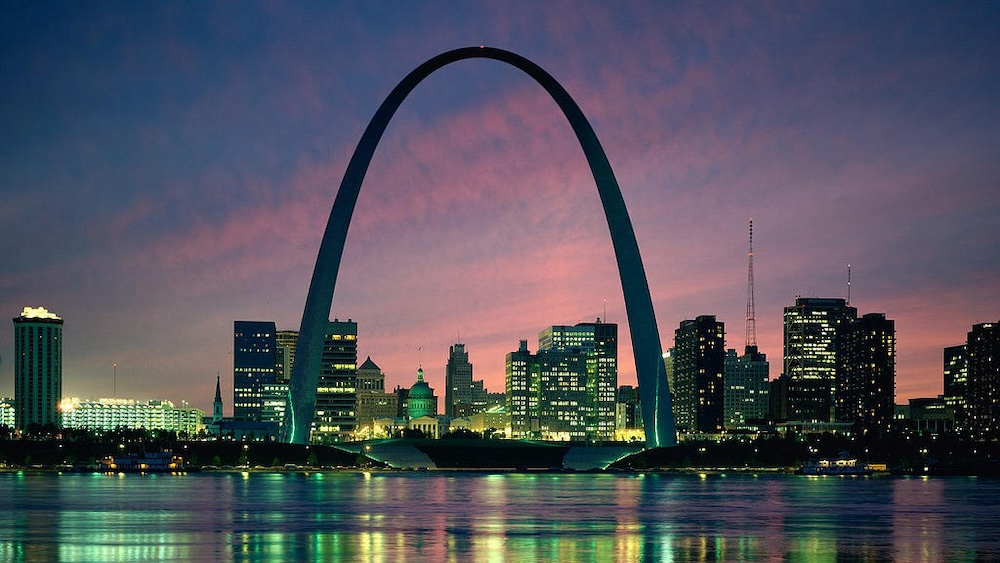
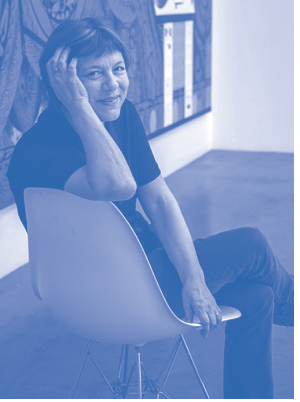 Dear Reader,
Dear Reader,


